Feliks Audio Euforia Evo HiFi Tube Amplifier / Preamp – Dream Of The Richest Sound
Feliks Audio Euforia Evo is a 2699 EURO / $2991 USD Headphone Amplifier based on the Tube Technology, being the ultimate achievement in OTL Technology, having a superb design, coming with 4 tubes in total, 2 for drive and 2 for PRE, along with a an improved design compared to the original Feliks Euforia that we reviewed a couple of years ago. Today we will review the Euforia Evo in-depth, and compare it to other high-end headphone amplifiers, including Audio Analogue AAdac (4000 USD), Feliks Auidio Euforia (2000 EURO), Violectric HPA V340 (2000 USD), HIFIMAN Prelude (2499 USD), and iBasso PB5 Osprey (1499 USD).
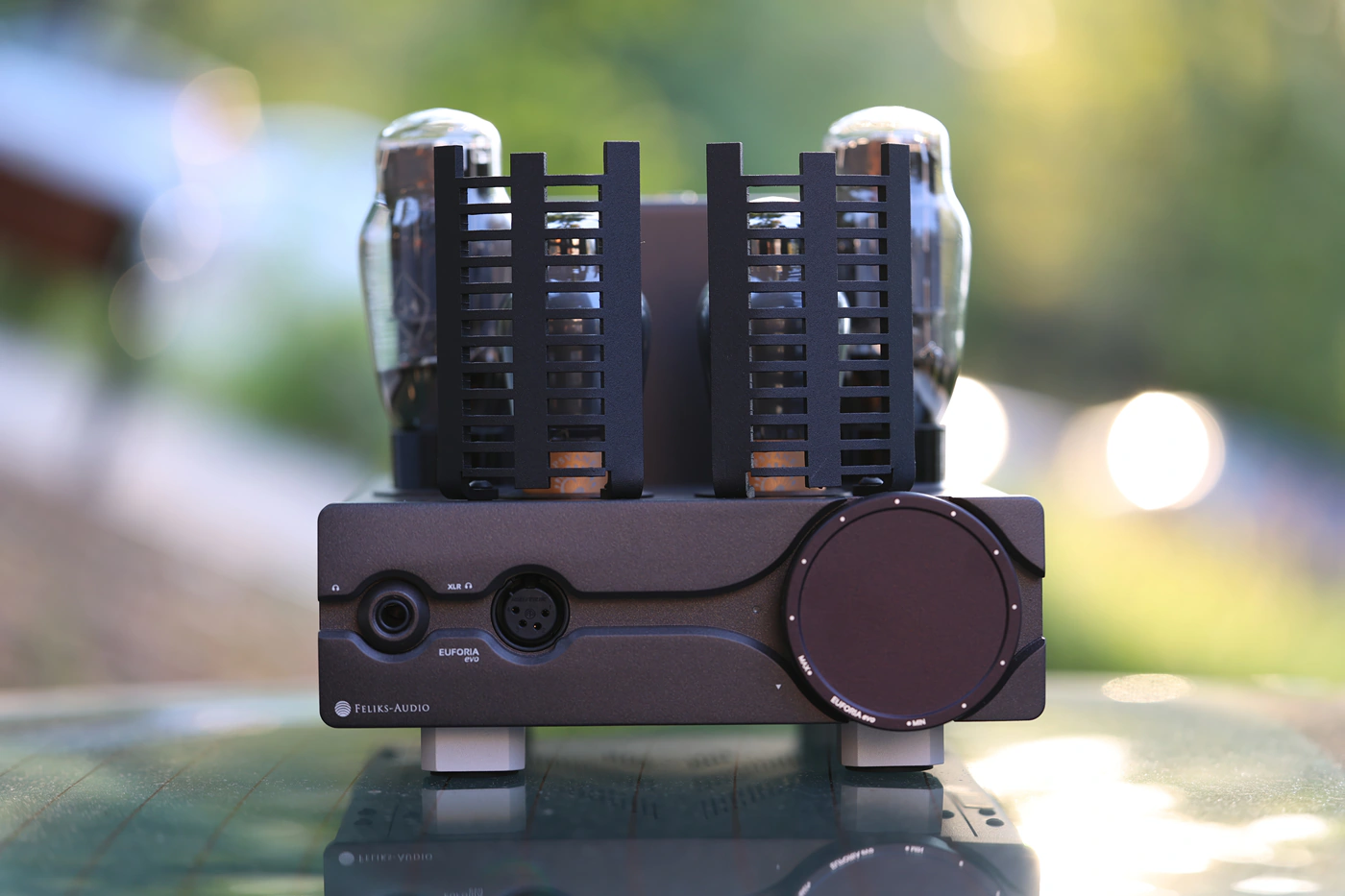
Introduction
Feliks Audio is a boutique, family-owned company from Poland specializing in handmade headphone amplifiers, speaker amplifiers, and they have over 20 years of experience in creating the most beautiful and appreciated Tube Amplifiers. Feliks Audio is considered a flagship-level company, they have some of the best support, build quality and attention to details ever seen in this hobby, and while for every company there is a broken unit every once in a while, I never heard of anyone ever breaking a Feliks Audio Amplifier. Even at large-scale events such as High-End Munich, feedback from both visitors and other exhibitors tell tales of the Feliks Audio quality, and how everyone wants to try every single pair of headphones with a Feliks Audio AMP, and how they’re usually the public’s favorite for tube AMPs. As an Amazon Influencer, I earn from qualifying purchases, and using the purchase links in my reviews helps me maintain this website and Youtube Channel. Huge thanks to Feliks Audio for providing us with the sample for this review.
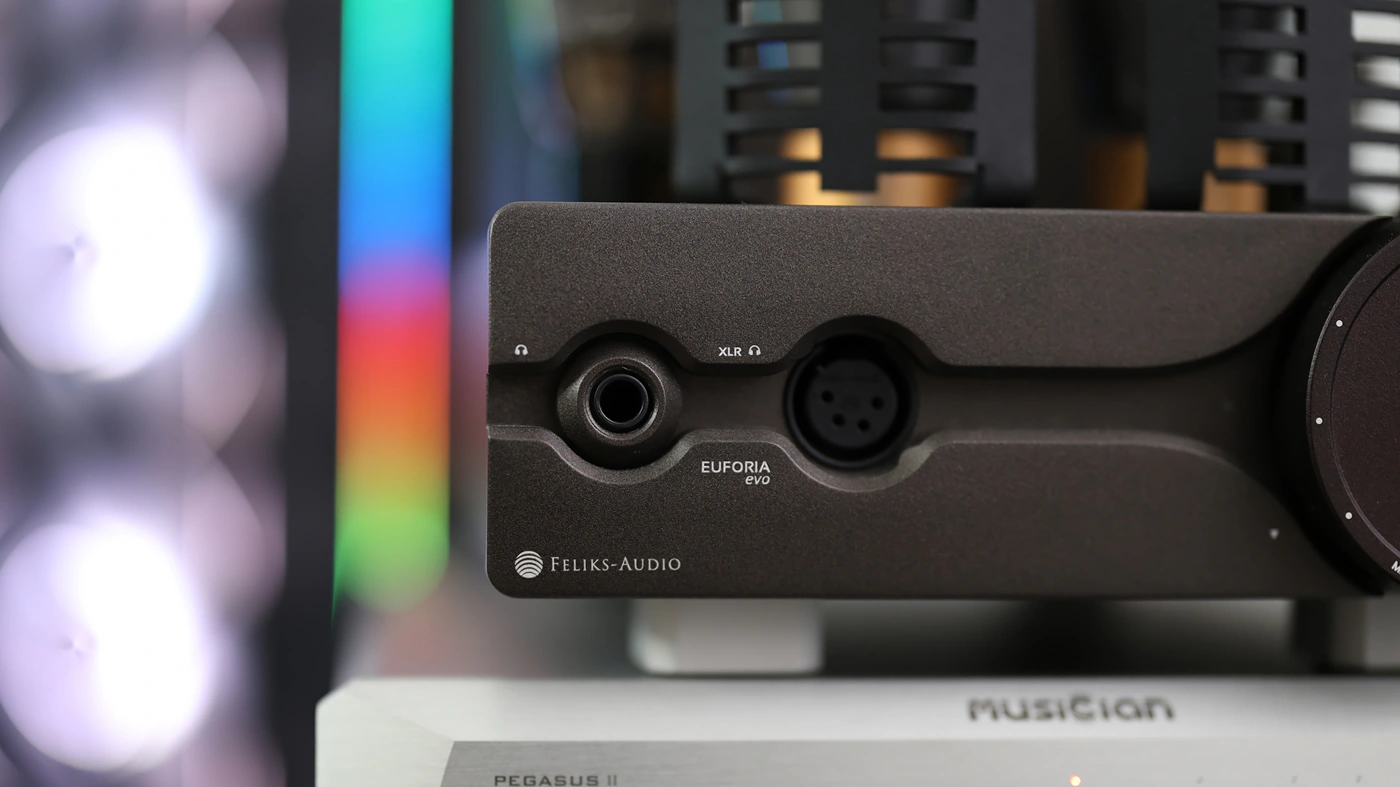
PROs – Wide and airy sound, with a neutral tuning, but a rich and smooth texture. The bass can reach 20 Hz even with very hard to drive headphones, while the treble does not roll off in any way, but it has a softer, wet character that is never harsh or metallic. The instrument separation and soundstage are excellent, with a strong 3D projection of the sound. Low background noise combined with a colorful, vivid and punchy midrange, will make for the most pleasing listening experience.
Cons – There are no XLR Balanced inputs and PRE outputs, and no native 4.4mm balanced headphone output.
Product Link
Feliks Audio Official Page – https://feliksaudio.pl/product/euforia-evo/
Build Quality/Aesthetics
Despite the rather flagship price point, Feliks Audio holds onto their professionalism and lets the product quality as well as other’s experience speak about the quality, as their own website is very compact and has only important technical information about the Euforia Evo, with little marketing, and delivering the best product similar to a silent luxury brand, you likely know why you’re here and the level of quality to expect.
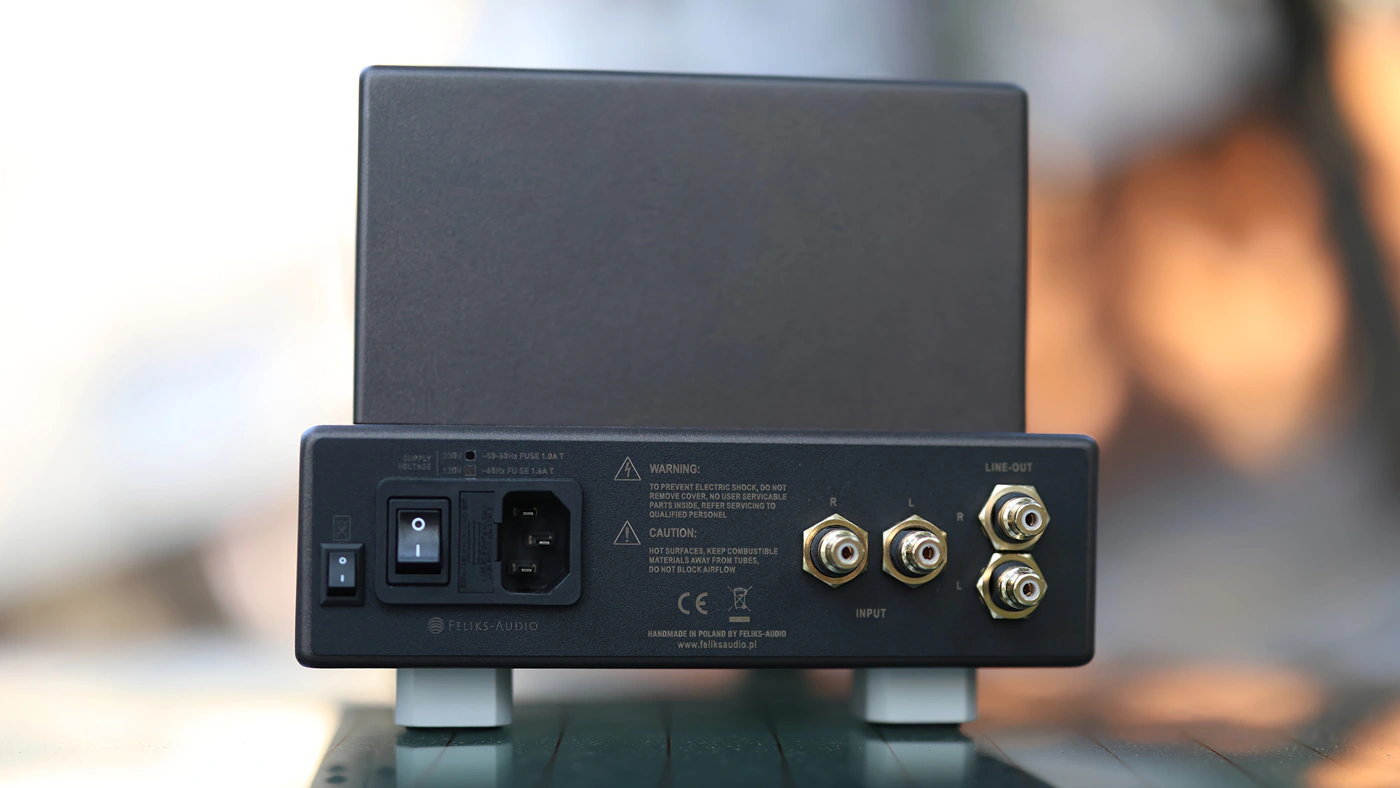
Speaking of which, Euforia Evo is an evolution from the Feliks Euforia, which I reviewed a couple of years ago, and Feliks audio has been one of the first brands to show me what true artisanal craftsmanship looks like. Euforia Evo weights 7 KG, it is a large headphone amplifier with the size 31.3 x 20.3 x 19.3, and it has support for both 230 V and 120 V, accommodating both the music lovers from Europe and also those from the USA and all other countries.
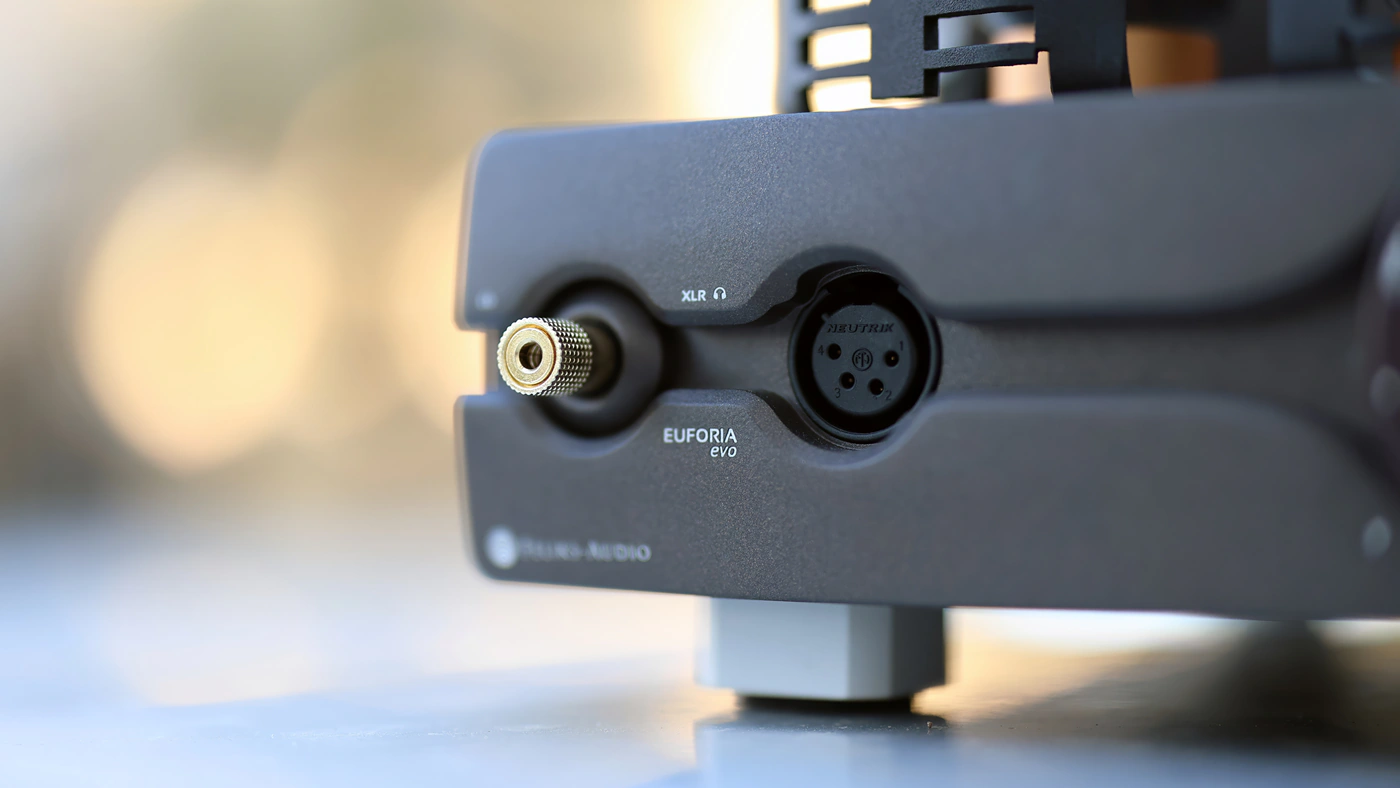
There are no particular accessories included with the Euforia Evo, except for the tubes, which represent a fairly big part of the price tag, and the tube protection cage, which you can see in some of our photos, as I tried exploring the Euforia Evo with both the cage on and off. There is a User Manual and an AC cord, and the tubes included by default are a pair of PsVane CV-181 MK2 “Gold” and a pair of 6N13S (NOS) tubes. Euforia Evo is designed to be the ultimate achievement in OTL Technology, with a perfect match for dynamic headphones and most planar magnetic headphones, having RCA inputs, with RCA outputs and both SE and Balanced XLR headphone outputs.
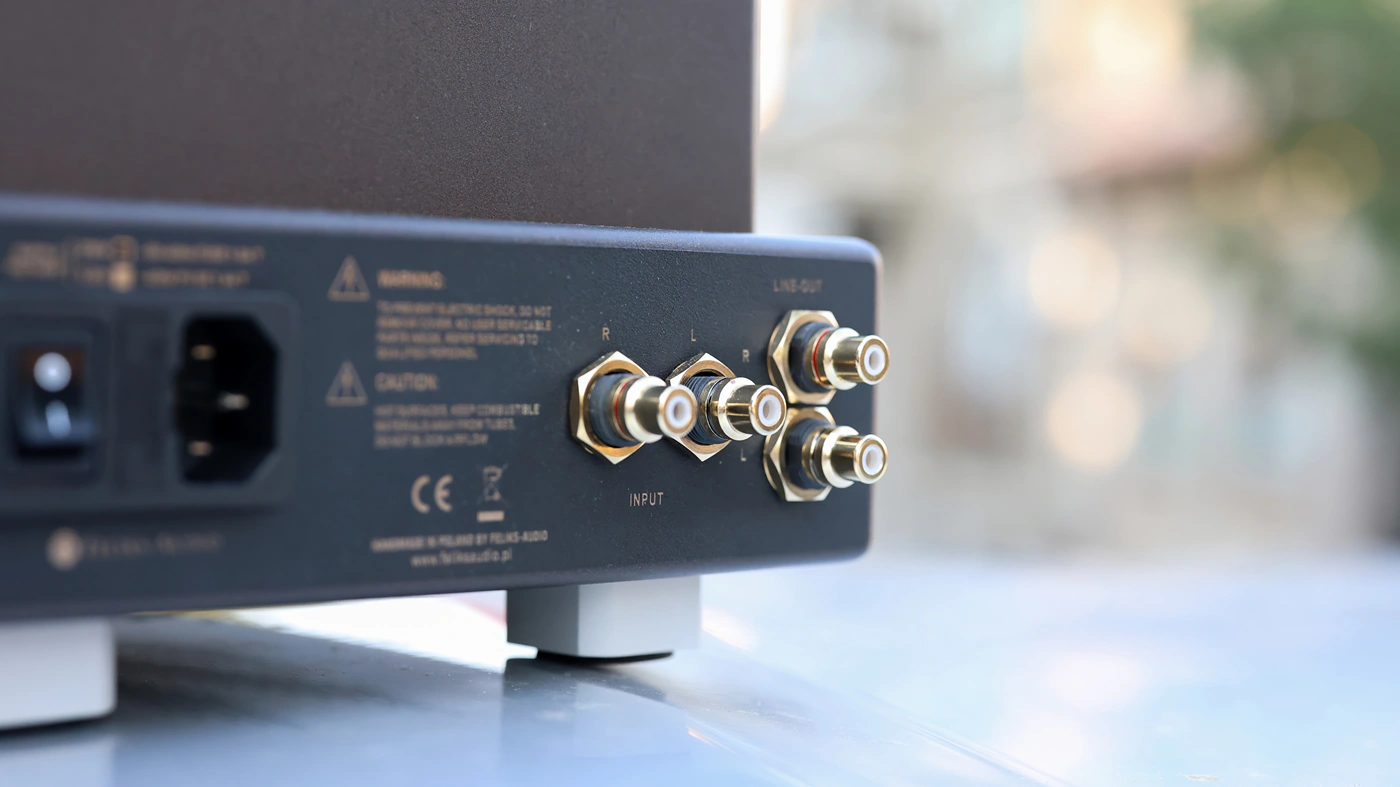
Internally, Euforia Evo has UPOCC Wiring, premium components and point to point design, and the shipping time is between 3 and 6 weeks, as those are made to order. Adding the protection cage to the Euforia Evo will add 100 USD to the price, but I would recommend adding them if you have pets, kids, or if you want to have peace of mind in general. It is almost impossible to destroy the tube sockets, but I wouldn’t want to tempt fate. We have an impedance of 100 k OHMs and a frequency response between 7 Hz and 80 kHz for an impedance of 300 OHNs, with a variation of + – 3dB. The maximum power output is 280 mW, and the THD is 0.4% for a 300 OHM load with a 20mW power delivery.
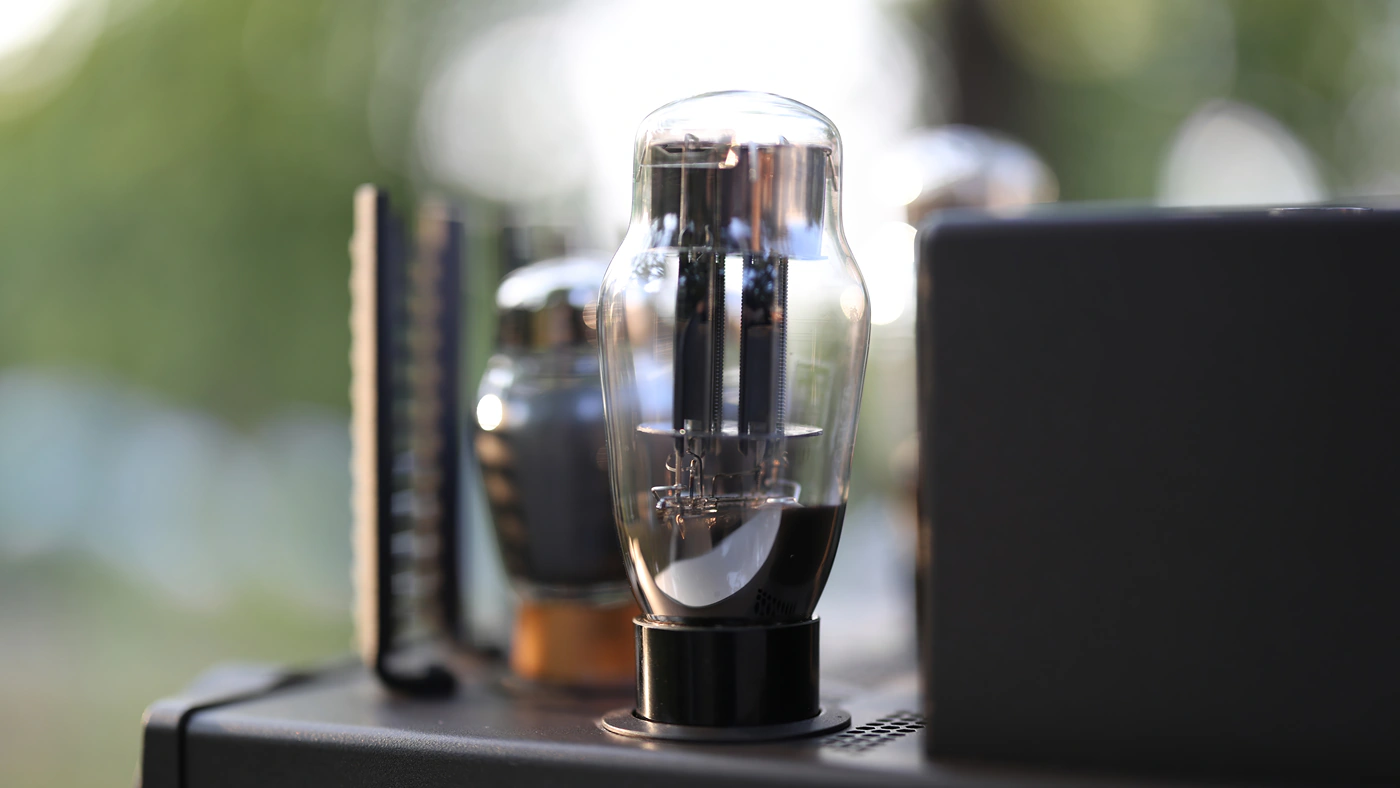
The optimal impedance for a headphone used with Euforia Evo is between 32 OHMs and 600 OHMs, including planar magnetics. The tubes inside of the Euforia Evo are designed to operate at high temperatures, exceeding 150 degrees celsius, so the protection cage will protect the tubes from you,but also from the heat of the tubes. The optimal sound will be achieved after 50 hours of burn-in, as the tubes have a very real physical burn-in effect, and Euforia Evo is equipped with a custom made stabilized toroidal transformer, paired with an electronic ripple suppression. Feliks included an automatic bias circuit, so no re-tuning is needed after replacing the tubes.
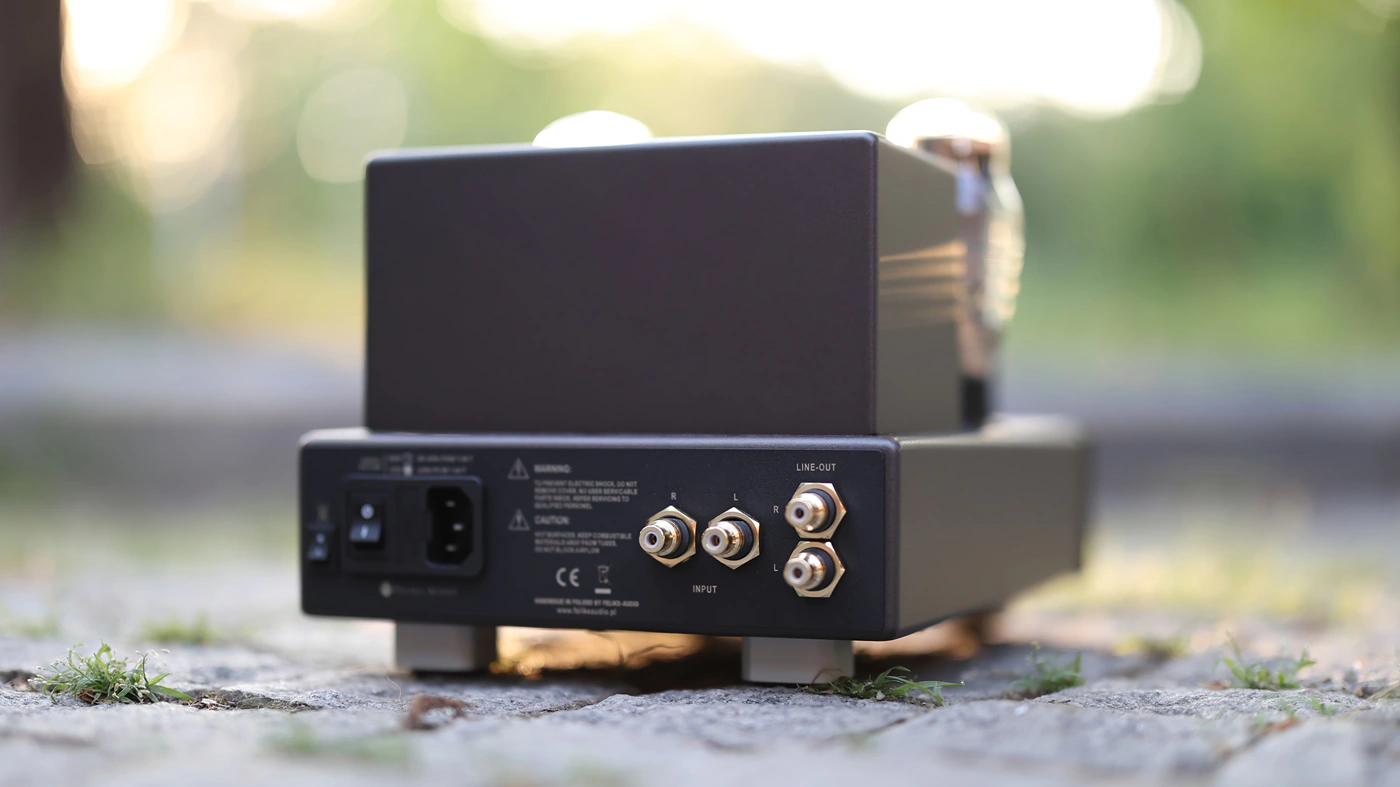
In everyday usage, Euforia Evo requires around 15 minutes to reach optimal working temperature. Besides the usual volume wheel, which is absolutely gorgeous, and the power button at the back, there is a special Cross-Feed button on the far right side of the unit’s back, and this feeds a part of the channel’s low-end frequencies in the other channel, amplifying the feeling that you’re in the middle of an orchestra and a bigger, wider soundstage. With certain music, this can feel fatiguing, and it is something usually implemented in the analogic domain, with tube AMPs, but Feliks Audio wants you to experience things as you need, so the switch can engage or disengage this Cross-Feed.
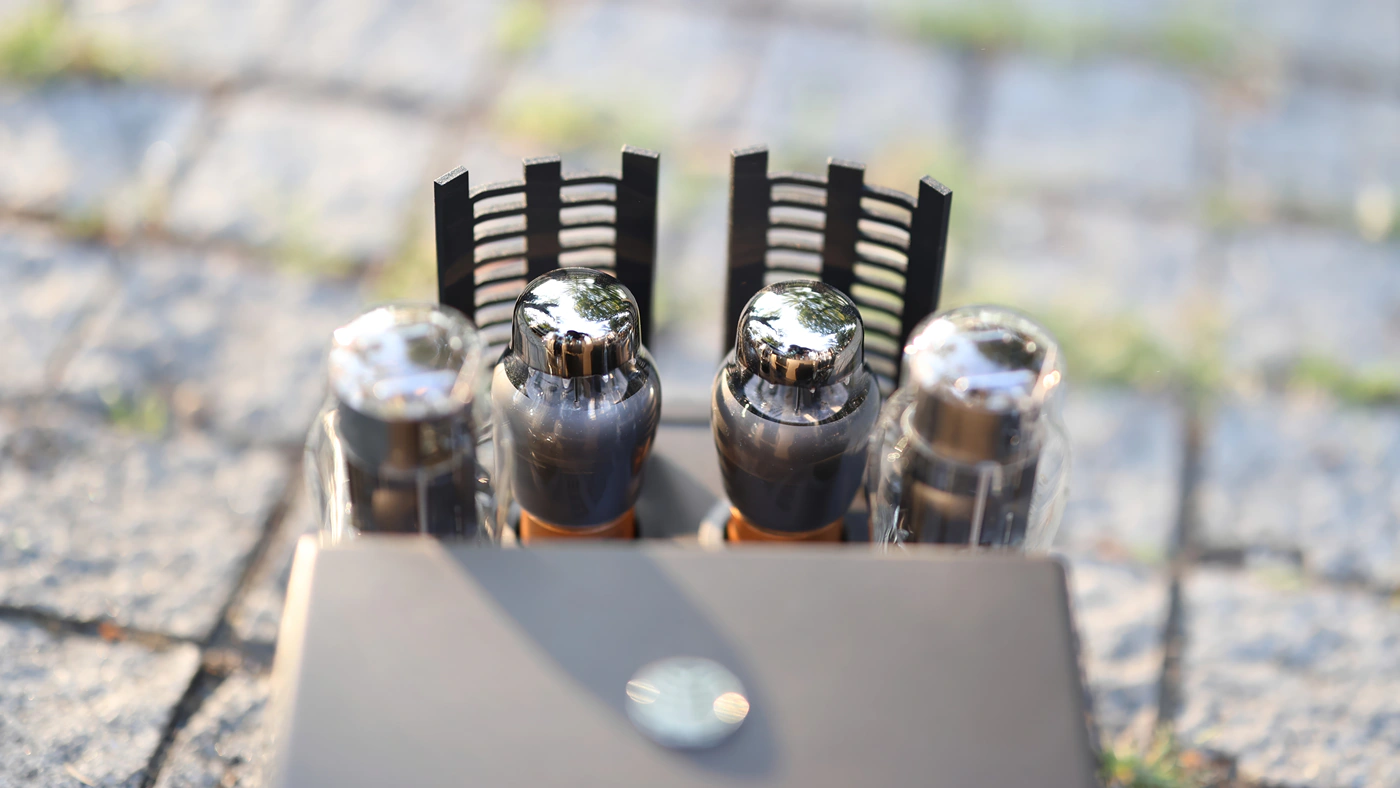
It is a good idea to turn off Euforia Evo after more than 8 hours of usage and allow it to cool off for at least one hour, as it is not designed to be used for longer periods of time. If you like to tinker with your devices, you can easily replace the tubes with the following:
- Driver tubes: 6N8S, CV181, ECC32, 5692, 6F8G
- Power tubes:6080, 5998, 6N5P, 6N5S, ECC230, 7236, CV2523
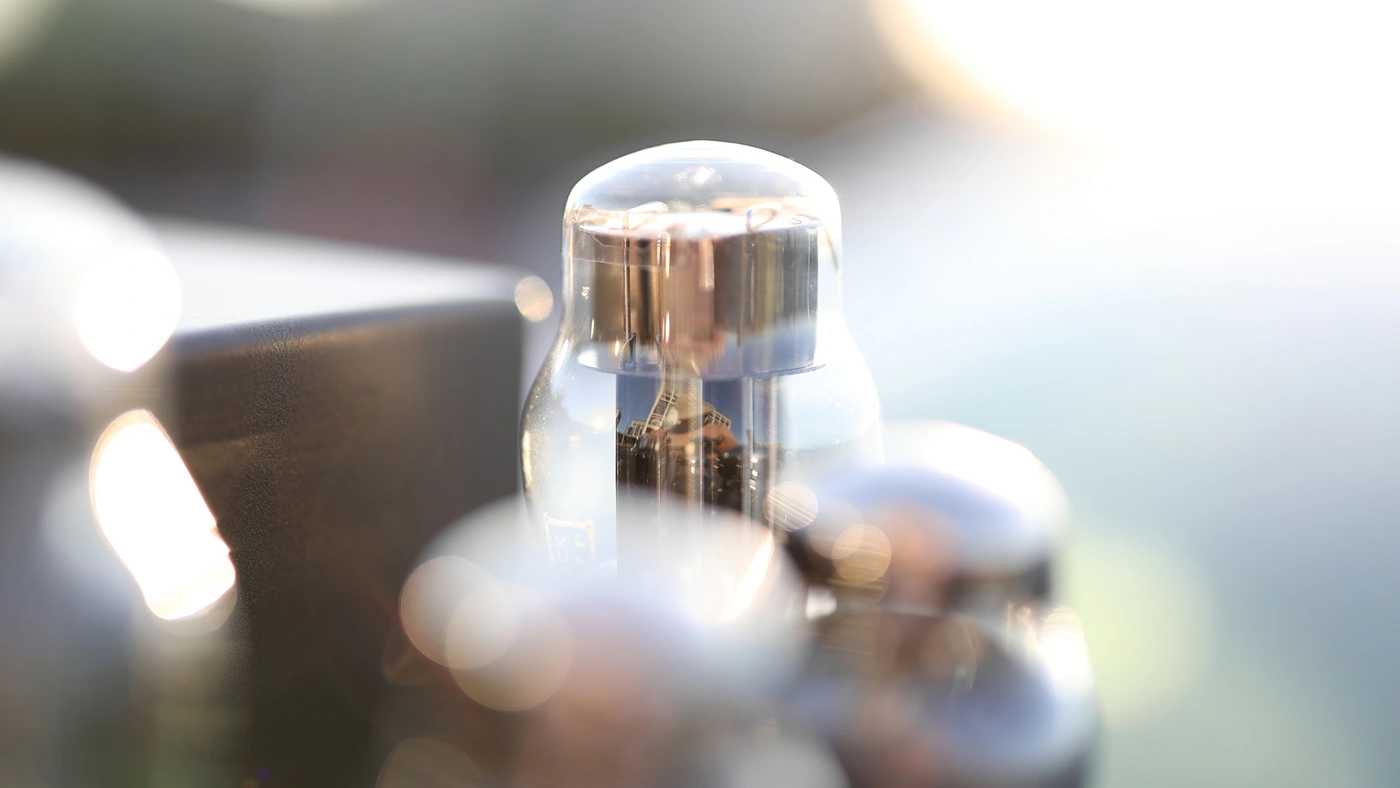
Subjectively, I noticed quite a few important key elements in my experience with Euforia Evo, and starting with the output, Feliks Audio uses an XLR headphone output, so I opted for the ddHifi XLR44B adapter to use Euforia Evo with my balanced headphones. At first, I started using Euforia Evo as a Preamplifier in between HiFiMAN Serenade and Keces S300+ to drive Pylon Audio Diamond 30 mkii. I also started tinkering with using Musician Pegasus II R2R with the same amp and speakers, and the experience has generally been excellent. When I switched over to driving headphones, it always felt like the drive factor was too high, and like the experience can further be improved, so then I remembered that those amplifiers might be putting too much voltage on the Line Out, so I switched to DAC with variable volume, and have tested Euphoria Evo with SMSL DO200 PRO, when I found true sonic bliss with headphones.
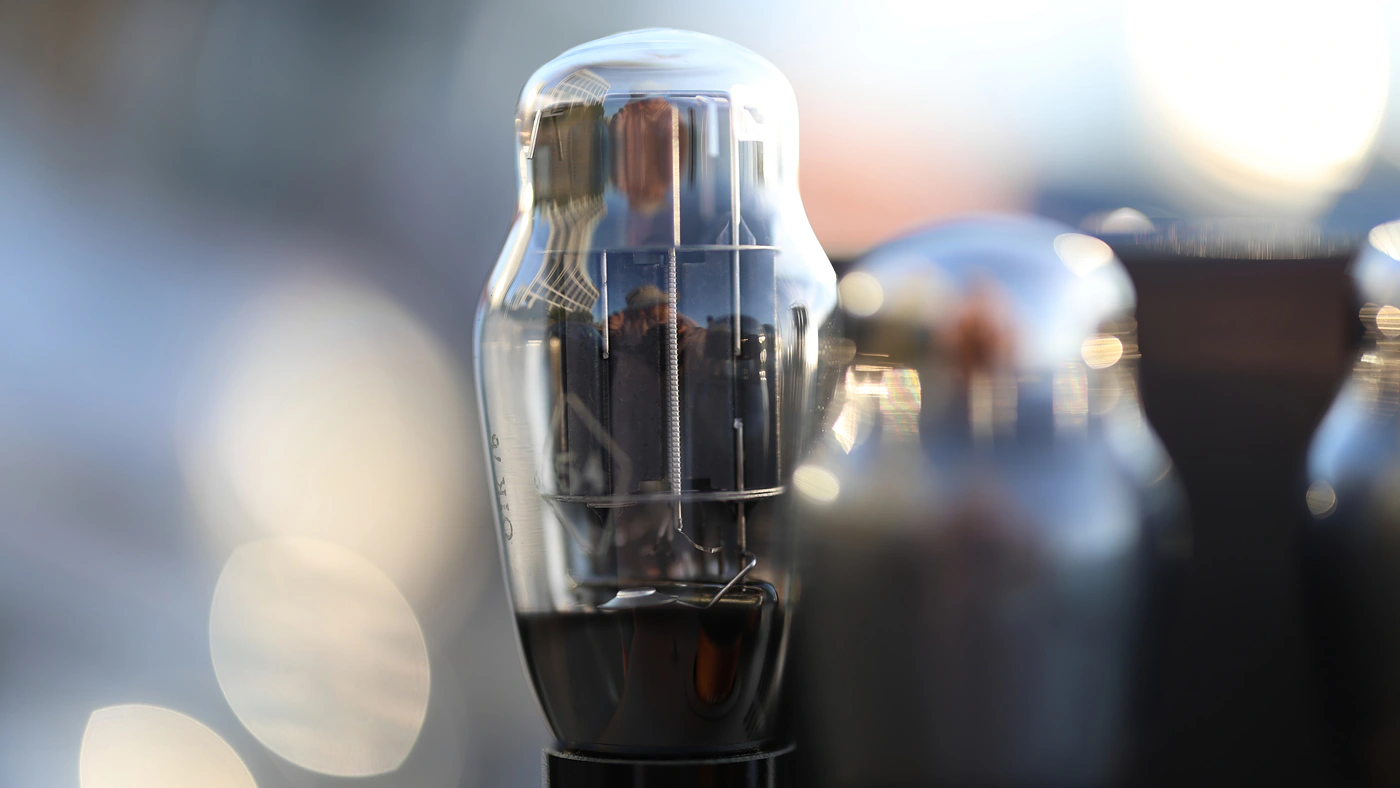
The idea here is that with hard to drive headphones, the sound is quite a bit better if you can lower the line out of your DAC, and to drive headphones, you can even set the volume to max on the Euforia Evo, there is no added noise, and the sound has the same control, but it is far more enjoyable and dynamic than if using a DAC with volume set at max and Euforia Evo to control the volume for the headphones. The Pre function in Euforia Evo is excellent, for easy to drive headphones. It is good to steer away from setting the volume to absolute max, about 75% is the sweet spot for most hard to drive headphones for the best clarity / punchiness ratio, although there is no added distortion at higher volumes, just the sound gets even more dynamic and harder, to the point it can be more specific in tuning, and that is where you get the strongest and most evident tube character.
Sound Quality
Pairings – To really experience every part of Euforia Evo, I have paired it with a wide collection of DACs to drive both Dynamic and Planar Magnetic Headphones, and even IEMs. The list of headphones includes Audeze LCD-5, HIFIMAN HE1000SE, Dan Clark Expanse, Crosszone CZ-8a Enhanced, HiFiMAN Audivina, Sivga Peacock, Sennheiser HD 660 S2, iBasso SR3, Erzetich Thalia, and Meze 109 PRO. The experience with headphones is generally excellent, all headphones are driven well, including Audeze LCD-5, Audeze MM-100, and I even tried the Euforia Evo with T+A Solitaire P-SE for a wider, more holographic experience, and the experience is even better than anticipated, with full dynamic range, no background noise even if Euforia Evo is set at max volume, as long as the DAC is controlling the volume for SPL Reasons. There’s a good sense of space and separation with all headphones, but I prefer the tuning with the Crossfeed switch turned off, as to my ears the instrument separation and clarity is better when it is turned off.

The IEM list includes FiiO FH19, Soundz Flame, Soundz Avant, Sennheiser IE900, Sweear HE-Live5, and Campfire Bonneville. It is generally recommended to use the Feliks Euforia Evo wit Headphones, it is a bit large, and practically using IEMs, you often risk placing the IEM cable next to the tubes and melting it, also with IEMs, the output impedance will create an audible hiss, although the AMP itself has zero self noise, you will not hear the tube noise, it is clean, detailed and crisp even with the most sensitive IEMs. As the design is OTL, it is good to add the disclaimer that you might burn the IEM drivers if they can’t handle the direct voltage from the tubes, so while I can risk some IEMS as a reviewer, I would get Euforia Evo for headphones and use it with headphones.
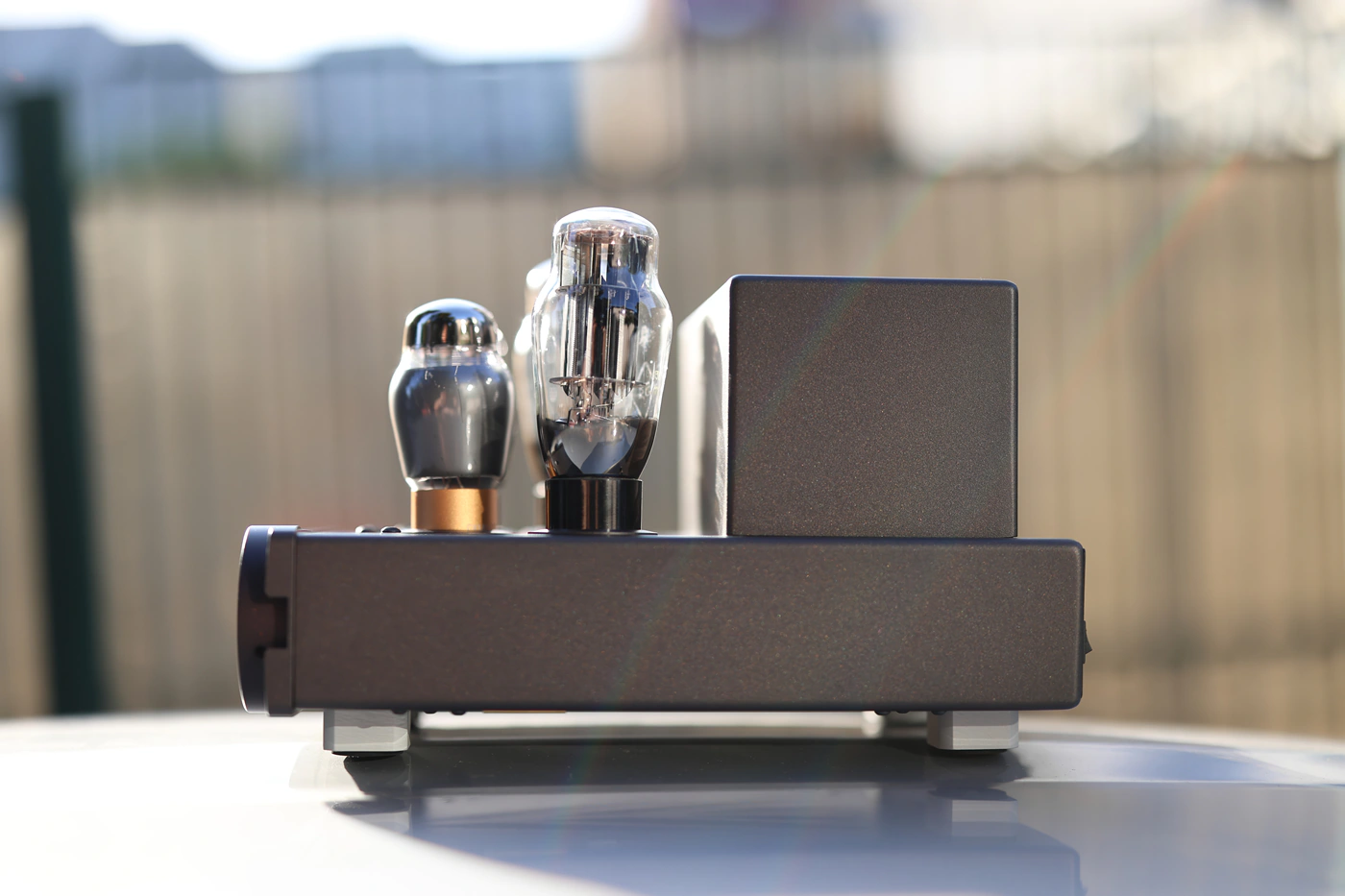
Overall Signature – Feliks Audio is known for a Neutral-Smooth, clean and detailed tuning, and Euforia Evo improves upon everything that the original Euforia offered, now having a far better dynamic range, improved resolution and lower noise, plus a much better control and driving power with hard to drive headphones. The sound is airy, holographic and has a fast speed, with outstanding impulse response, but the added tube magic, a higher degree of even order harmonics, which gives richness and contrast to guitars, creates a realistic texture for guitar riffs, pianos and even puts a bit of extra warmth and life into voices. The sound is exceptionally well separated, with instruments being kept well-defined and the soundstage expanding far wider than the confines of my room and headphones, Feliks Audio Euforia Evo being excellent at projecting music in a holographic, engaging way.
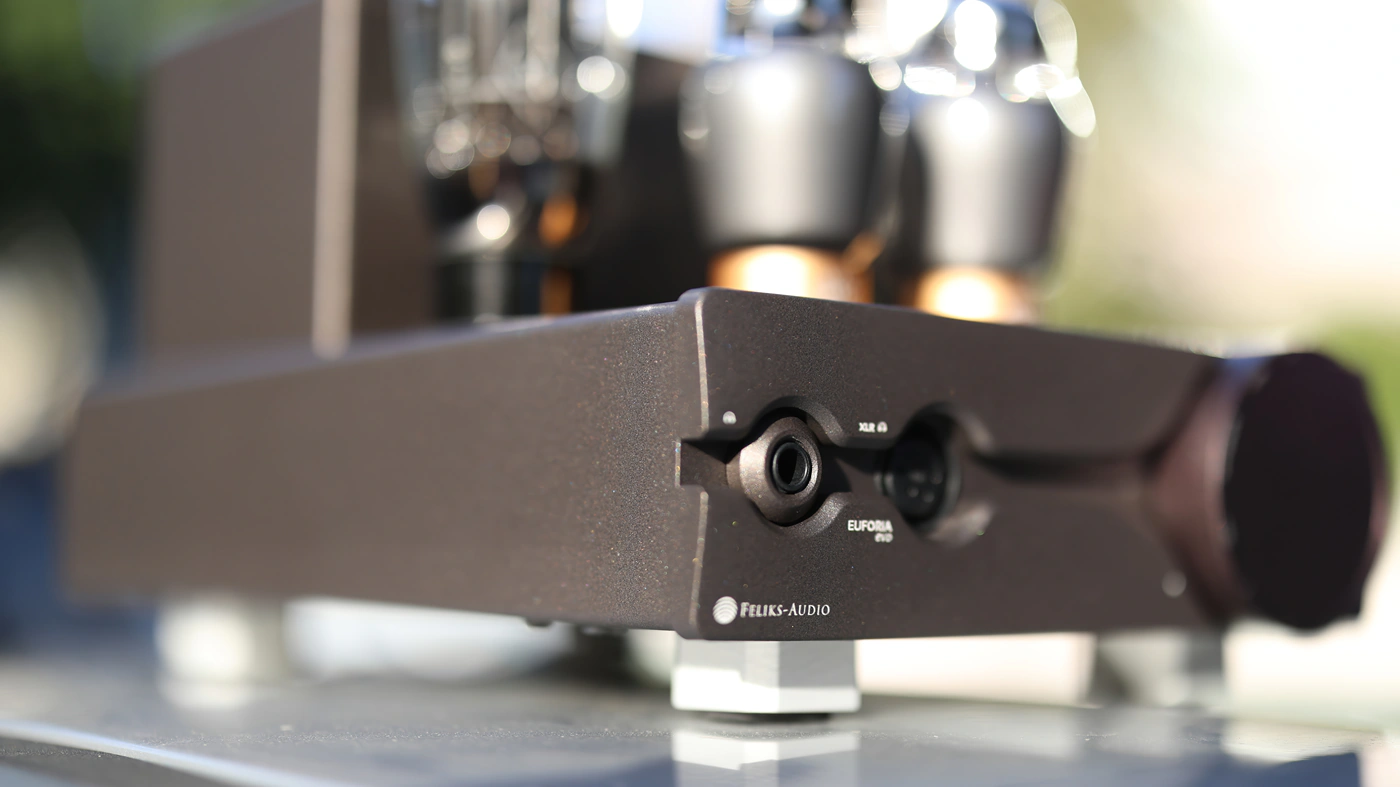
Bass – Staring with the low-end, this is the one aspect that is similar between Feliks Euforia and the new Evo, as the bass is still pretty neutral, clean and distortion-free, but doesn’t cross in the warm territory, allowing music to have just the right amount of low-end to sound faithful to the original recording. There’s a distinct sense of warmth when the song has a smoother, lusher bass recorded, and Euforia Evo safely touches 20 Hz, present a strong sub-bass extension, but keeps the amount neutral and in-check. A pair of fairly basshead headphones will sound bassy and punchy, while neutral headphones like T+A Solitaire P-SE will sound more neutral and level. The easier to drive Palma DHS-1 will sound bassier and warmer, with more punch and sub-lows impact, also more forward and more vivid, allowing EDM and Rap music to shine.
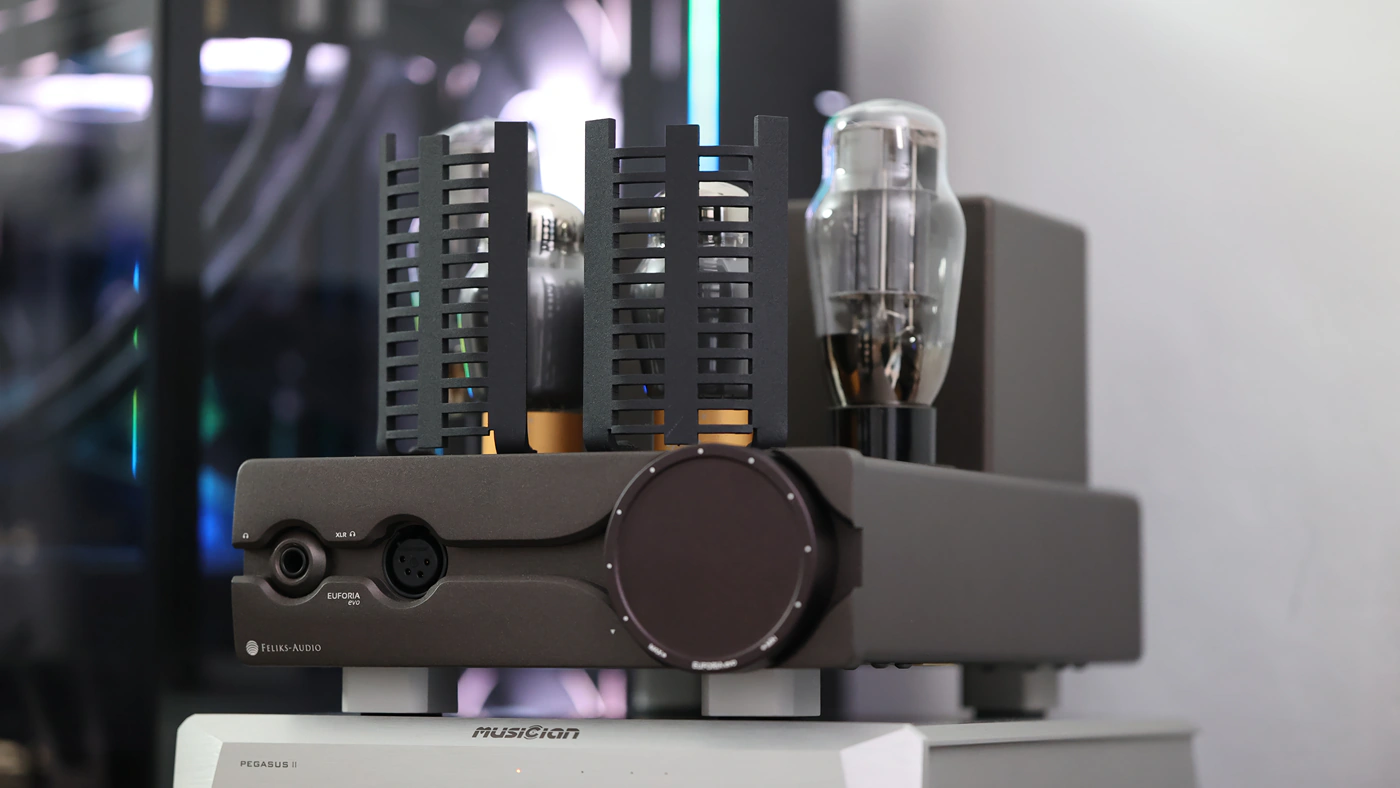
Midrange – The midrange as presented by Euforia Evo is one of the most beautiful, musical, smoothest yet richest sounding midrange presentations I have ever heard. There’s such a strong sense of color, separation and life in the mids, with a rich texture, but not ostentable grain, just pure analog richness and clarity. Euforia Evo gives male voices depth, strength and power, and female voices color, sharpness, brilliance and emotion, it is a truly neutral amplifier that can favor every music style, from rock to J-Pop to EDM to Classical. Especially for classical music, Euforia Evo gives instruments the right texture and timbre to sound vivid and realistic, but even with songs like Falling In Reverse – Roland, you can hear such vivid, realistic guitar riffs that are colored. With most AMPs, the guitar riffs sound very mid-centric and flat, but Euforia Evo presents those colorful, vivid and detailed. Female voices are presented with the most beautiful and musical tone possible, perfect for my usual selection of J-Pop and J-Rock, but also for western pop, giving realism to voices of artists like Lady Gaga and Katy Perry.
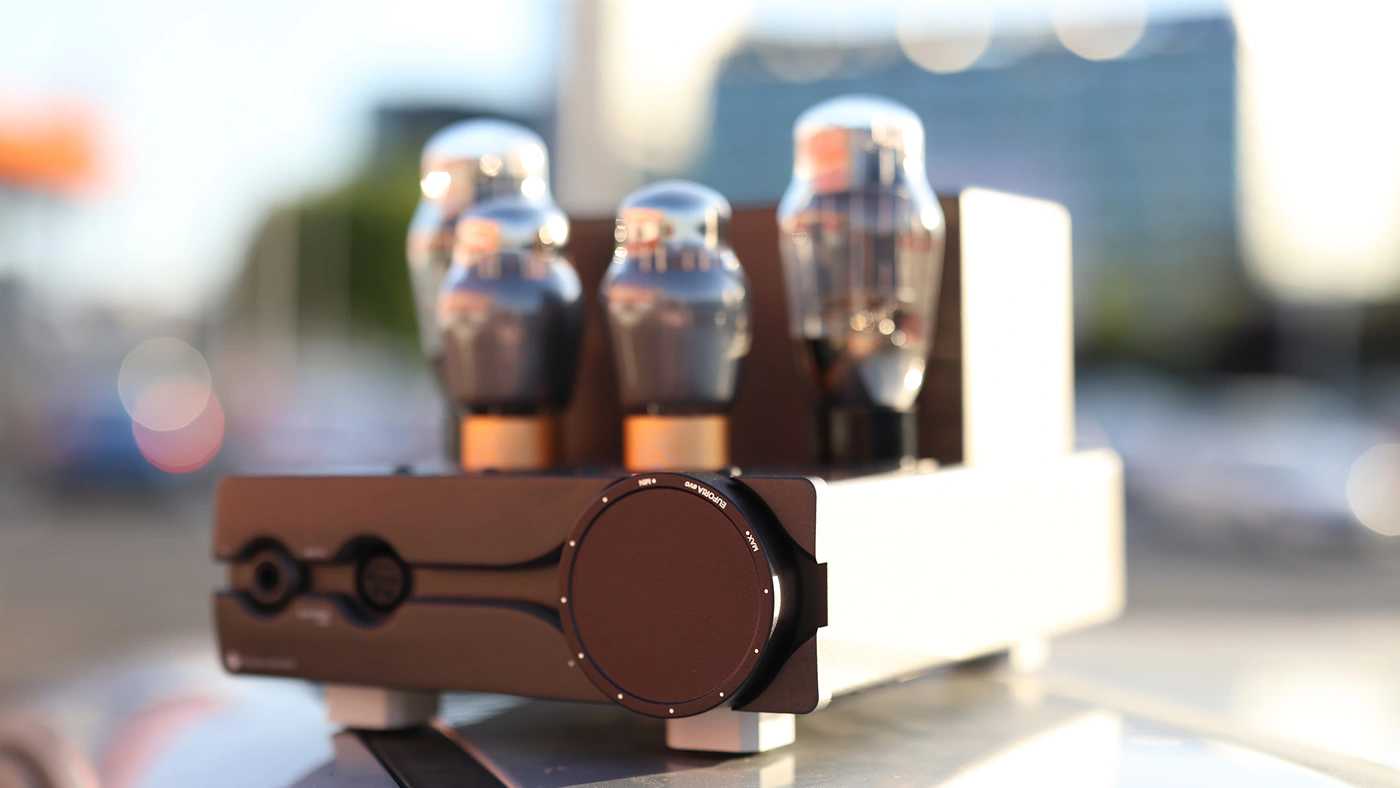
Treble – As a neutral Amplifier, Euyforia Evo has perfect extension as high as I can hear, with a slightly soft timber and texture, characteristic of the tube amplifiers in general, with no grain or harshness, even for extremely bright and sharp music. Euforia Evo gives strength and brilliance to air and spaciousness of music, rather than emphasizing the metallic texture in the cymbals, so the sound is general smooth, rich and pleasing, and tubes always have a tendency to slightly soften the sound, giving a wet character and impulse response to music, creating what I would call the most beautiful way to compliment the rest of the neutral – smooth and holographic signature.
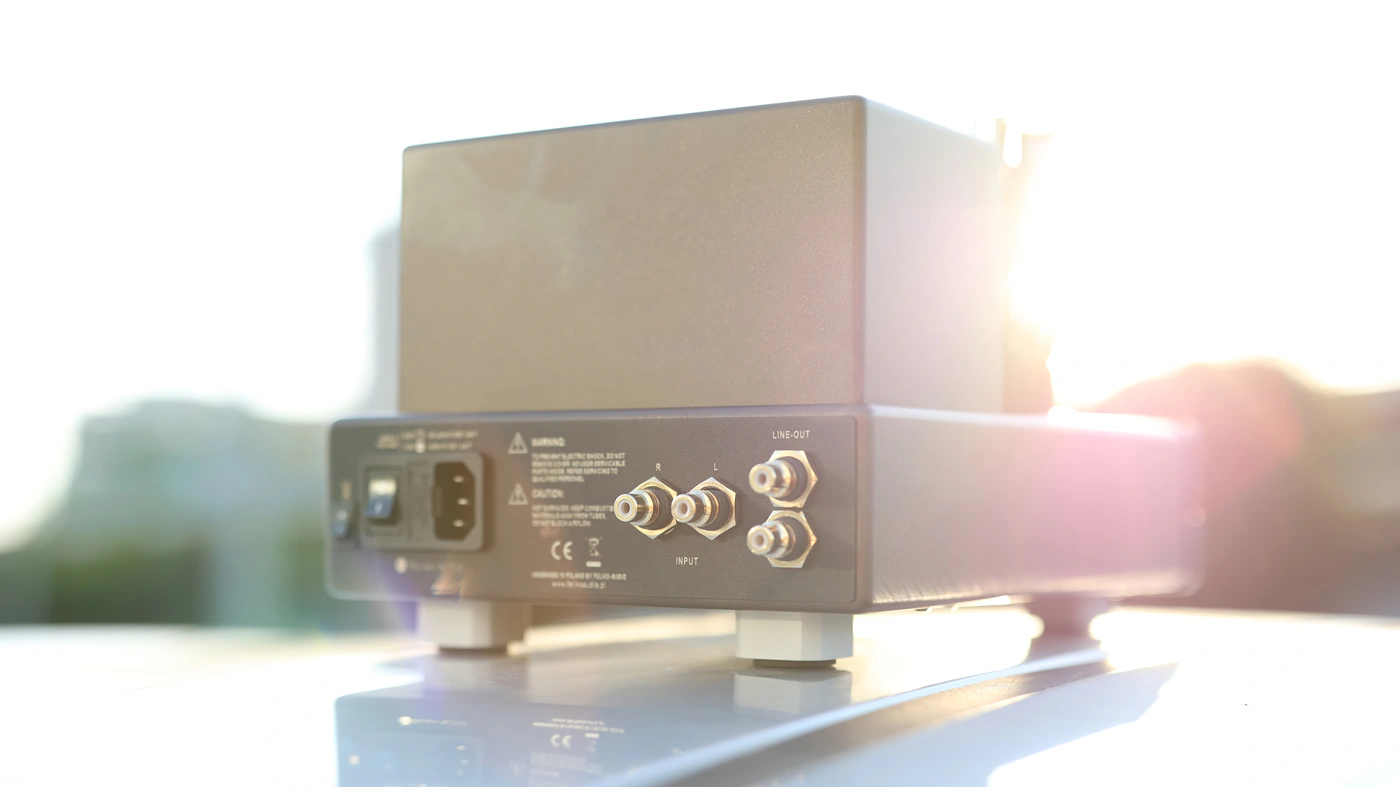
Volume Control – If you’re generally afraid to push the volume, Feliks Audio can put your mind at ease with their Euforia Evo, which has a perfect volume control, with no variation of the tuning with volume, the sound is as detailed, clean and rich regardless of the volume level, although increasing the gain can heavily increase the feeling of dynamics and forwardness. The noise floor can marginally increase when you’re near the maximum volume, but for most listeners this should not be an issue. I really recommend playing around with the volume of your DAC and Euforia Evo to find the best balance, the tubes can saturate and gain differently from solid state electronics, and will show a different way of handling volume than a standard amplifier, having a different texture, even if the tonality is the same, so I would say that in every volume range is a different signature waiting for you to discover it. With easy to drive headphones, the sound can be better with the DAC set at max and the AMP setting the volume while with hard to drive headphones, setting Euforia Evo at max and using the DAC to set the volume yields better results. Depending on what you’re driving, a different approach is useful to achieve the best sound.
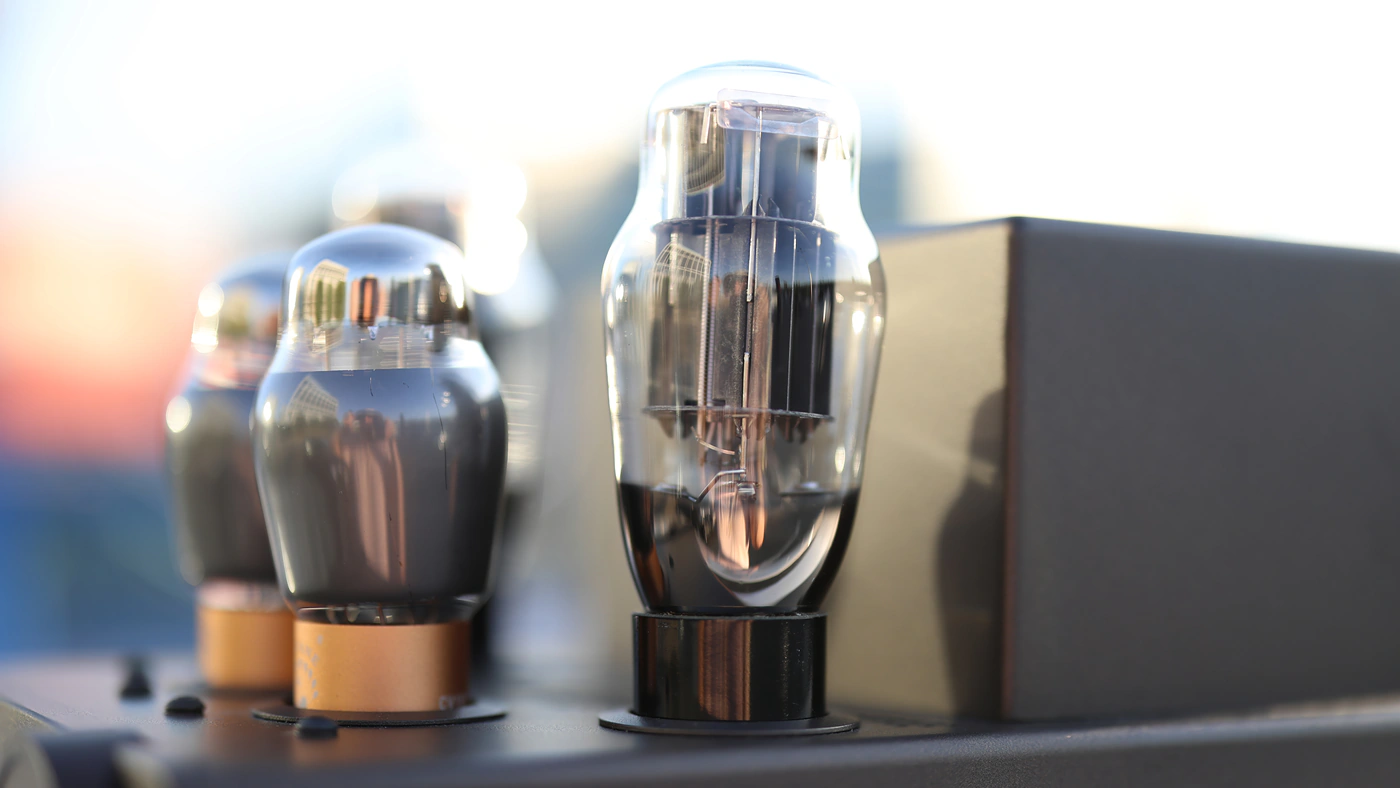
Dynamics / PRaT / Textures – Tube AMPs are generally known for a wet character and a rich texture, and Feliks Euforia Evo achieves this nicely, without going overboard with the sweet AMP distortion, having a neutral tuning, but a wet character / impulse response, as it presents music with a good amount of texture, resolution and detail without sounding edgy and harsh. The sound of metallic cymbal crashes feels as if the cymbals are wet, this is generally desirable as it leads to a more relaxed and less fatiguing listening experience, and is a huge reason people go for tube amps in the first place. The dynamic range is perfect, you can hear a high difference between a whisper and a loud bang, Euforia Evo does not compress the dynamic in any way, and sounds playful, jumpy and otherworldly dynamic, being able to react quickly to the impulse response and show a high difference between the quieter and louder passages.
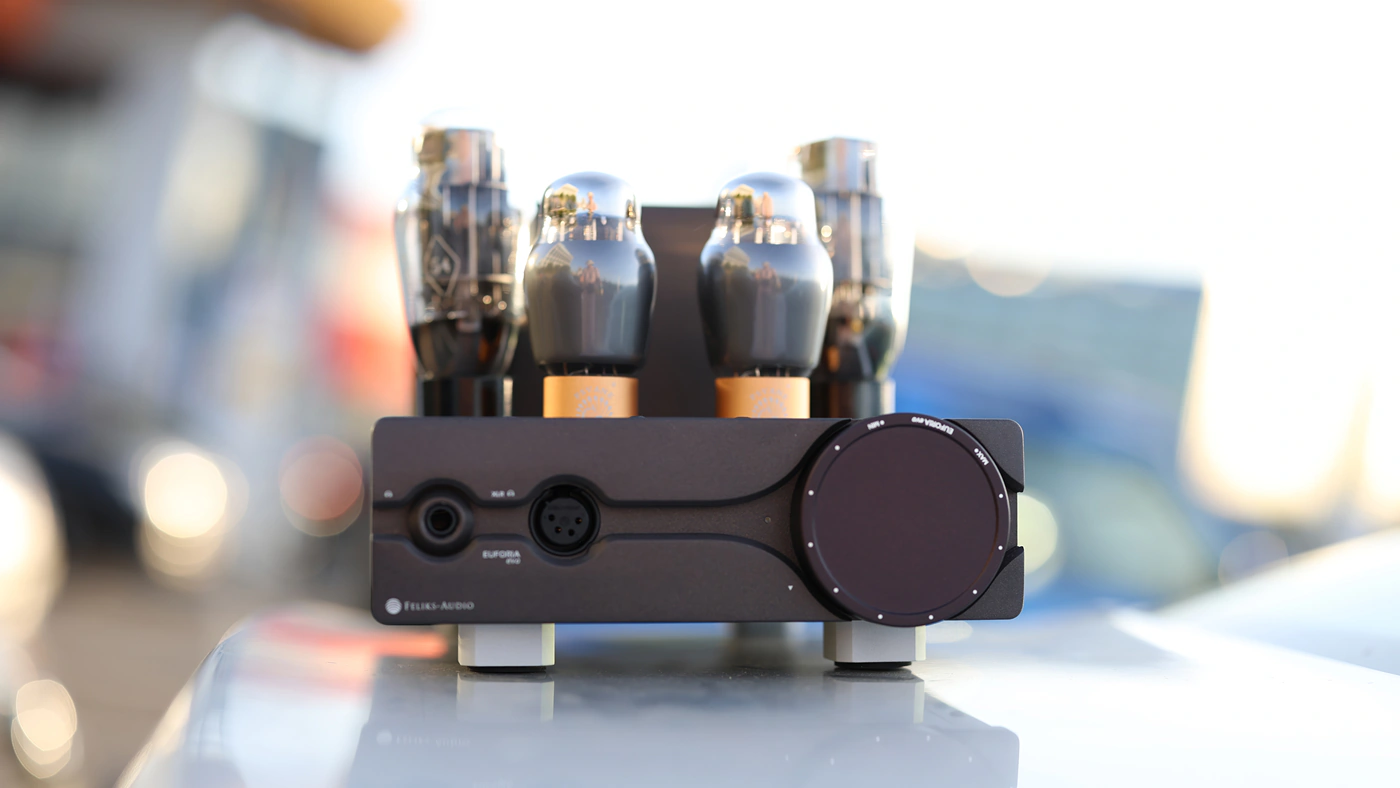
Soundstage – If I ever wanted to match the soundstage size and instrument separation of the Euforia Evo, this paraph would expand in countless pages, Euforia Evo is an amplifier that really projects instruments openly in the 3D space, it has an excellent instrument separation, project the guitars, voices and cymbals in different layers and spaces for metal tracks. Even tracks which are mastered to sound narrow will be presented expanded and airy by euforia Evo, but it manages to avoid scattering by having a high degree of definition for each instrument, you hear where the instrument ends even if it is presented fairly far away from you as the listener. There’s a perfect degree of space, Euforia Evo can project and present, perfect for orchestral, classical and even metal tracks. The sound is very interesting for pop, edm and electronic music where this holographic presentation makes you feel as if you’re at a club dancing and having fun, although for my ears, headphones and music the sound is much wider with the crossfeed switch disengaged and with the function turned off.
Gaming Usage / Preamp Desktop Usage
It is not often that we hear about such a large-scale amplifier used for gaming, but I couldn’t stop myself from using Euforia Evo the more I could, so I experienced quite a bit of high-end gaming, including shooters, strategy games and even Visual Novels. Euforia Evo has a hard impact and harder texture / sound when it is driven at high volumes, which works well for shooters, but it has a wide soundstage and excellent imaging, helping you judge the space within a game really well, allowing you to know where a sound is coming from and what it that object / warning might be.
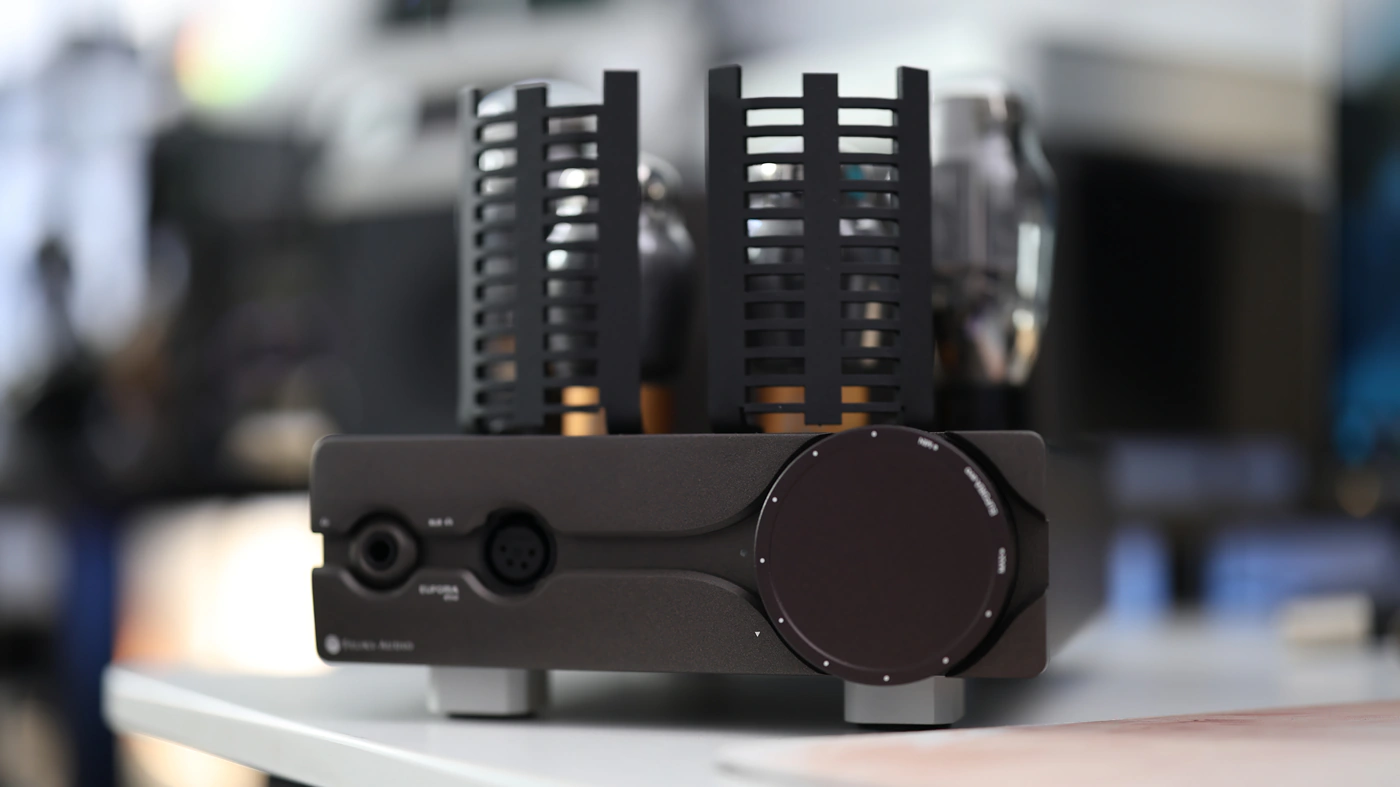
The excellent definition and clarity helps with Visual Novels, where the softer, more wet character makes guitar-lead songs beautiful, smooth and rich, really creating the atmosphere and environment in all games I played using it. The PRE usage is also perfect as Euforia Evo does not have a noticeable noise, but it has its slightly wet, musical and playful character when used as a PRE too, giving some tube magic to an otherwise fully solid-stage setup.
Comparisons
Feliks Audio Euforia Evo vs iBasso PB5 Osprey (2991 USD vs 1499 USD)
Build – There is no other device that can be so similar yet so different – PB5 is a portable tube amplifier, using NuTube Amplifiers, while Euforia Evo uses some of the largest tubes to create the sound. Euforia Evo has only a single ended input, the RCA input, while PB5 has a balanced 4.4mm input. There is a single ended output and a balanced output on both, but Euforia Evo has an XLR large output, while PB5 has a 4.4mm balanced output. Both amplifiers can pick up RFI and EMI, but the large tubes on Euforia Evo might be more sensitive to it. PB5 is portable, has a battery, and has a higher maximum driving power, although the background noise level is fairly similar, and inherent to the tubes, not to the amplifiers, as both have a bleeding edge quality to the circuit and power delivery, yet tubes have this issue of being sensitive to noise.

Sound – The main reason I added the comparison is not to spite either, as both are personal favorites and have brought me countless hours of joy, but to rather point out the similarities in tuning, sound and the differences too. At the bass level, PB5 has a bassier low-end with more sub-bass and more punch in the ultra-lows, while Euforia Evo is more neutral. The midrange is where the two AMPs are very similar, both present music with a rich, colorful contrast between instruments, excellent dynamics and a really musical tune. Both have a slightly wet character, creating a pleasing and easy to enjoy sound. The treble also has a somewhat soft character for both, allowing the full extension to shine through bright and crisp, but creating a slightly soft edge in the treble. The actual resolution is comparable, and the soundstage size is ultra-wide with both AMPs, although Euforia Evo creates a slightly stronger instrument separation and a projects instruments farther away from the listener, while PB5 creates the feeling of roundness a bit more, as it defines the body of each instrument a bit more, thanks to its warmer sound. The tunings of both take full advantage of the tubes inside, giving music a musical and magical tune, so I recommend both and consider both to be downright excellent.
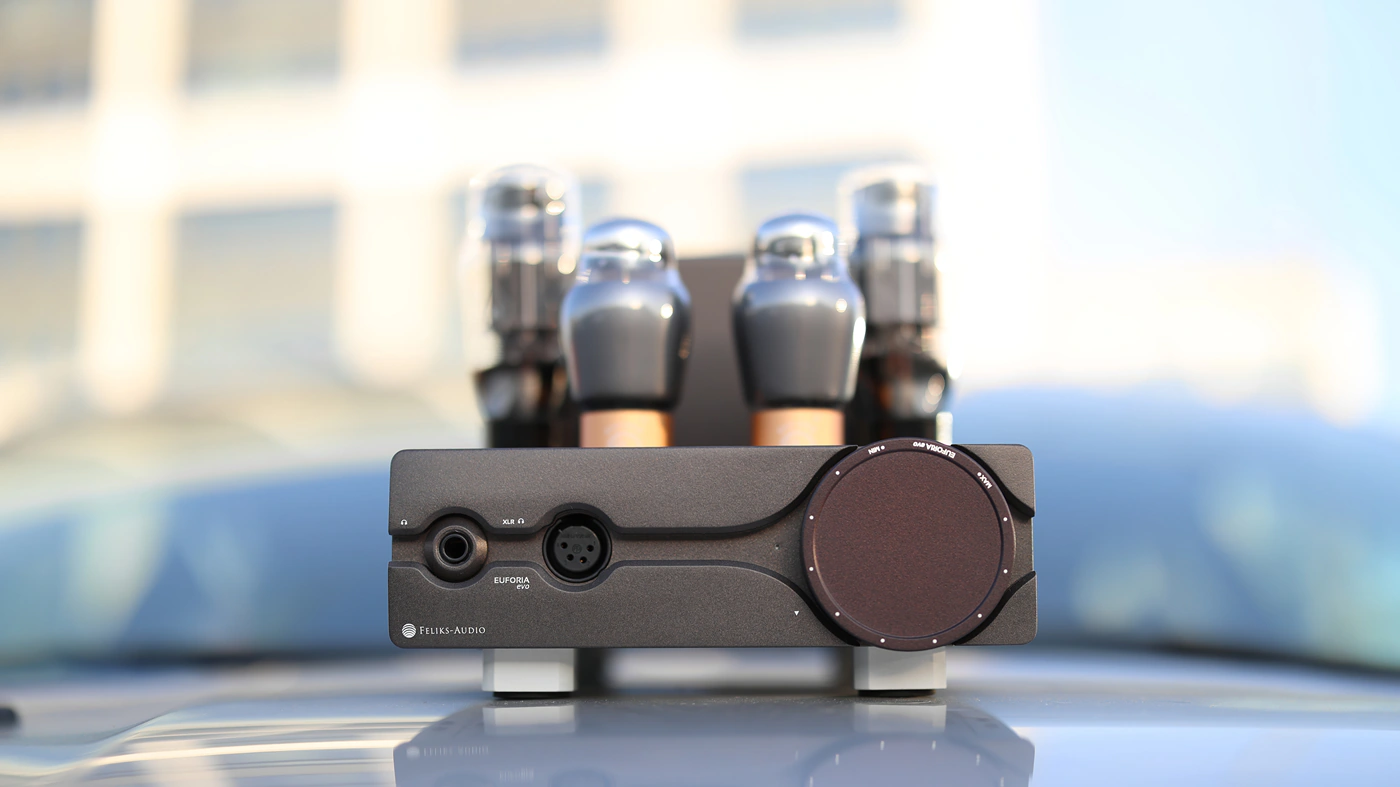
Feliks Audio Euforia Evo vs HiFiMAN Prelude (2991 USD vs 2499 USD)
Build – Prelude is a flatter, also very heavy amplifier that works as a preamplifier. Prelude has XLR inputs, XLR outputs, RCA inputs and RCA outputs, while Euforia Evo works mainly with RCA connections for the line input and line output. The volume control of the Prelude is a bit more granular and regardless of how hard to drive the headphones are, it works a bit better with IEMS, having absolutely zero background noise, compared to Euforia Evo where you have to experiment a bit how much tube character and drive you want in your music. From this perspective, you can customize the sound a bit more with Euforia Evo, which will change the tube drive and character depending on the volume a bit. Prelude has a 4.4mm balanced headphone output, XLR balanced output, and more, having a more versatile approach to the amplifier part, although it is solid state fully.
Sound – Sonically, Prelude has much more driving power, and will have a polar opposite tuning compared to Euforia Evo, as Euforia Evo is neutral, rich and colorful, dynamic and engaging, while Prelude is smooth, lush, warm, bassy and has a soft, relaxed treble, a perfect pair for very sharp and bright sounding headphones, while Euforia Evo has a more neutral tuning. Both Amplifiers have an exceptionally wide soundstage and strong instrument separation, but thanks to its airier sound, Euforia Evo projects music more vertically, the stage is wider and more holographic, while Prelude sounds deeper and defines the body of each instrument a bit better. For a lush, warm and smooth experience, Prelude will offer it quite well, it sounds analogue in the way tape sounds analogue, while Euforia Evo sounds rich, pumped up and energetic, lively and colorful, it has the tube magic playing in full strength.
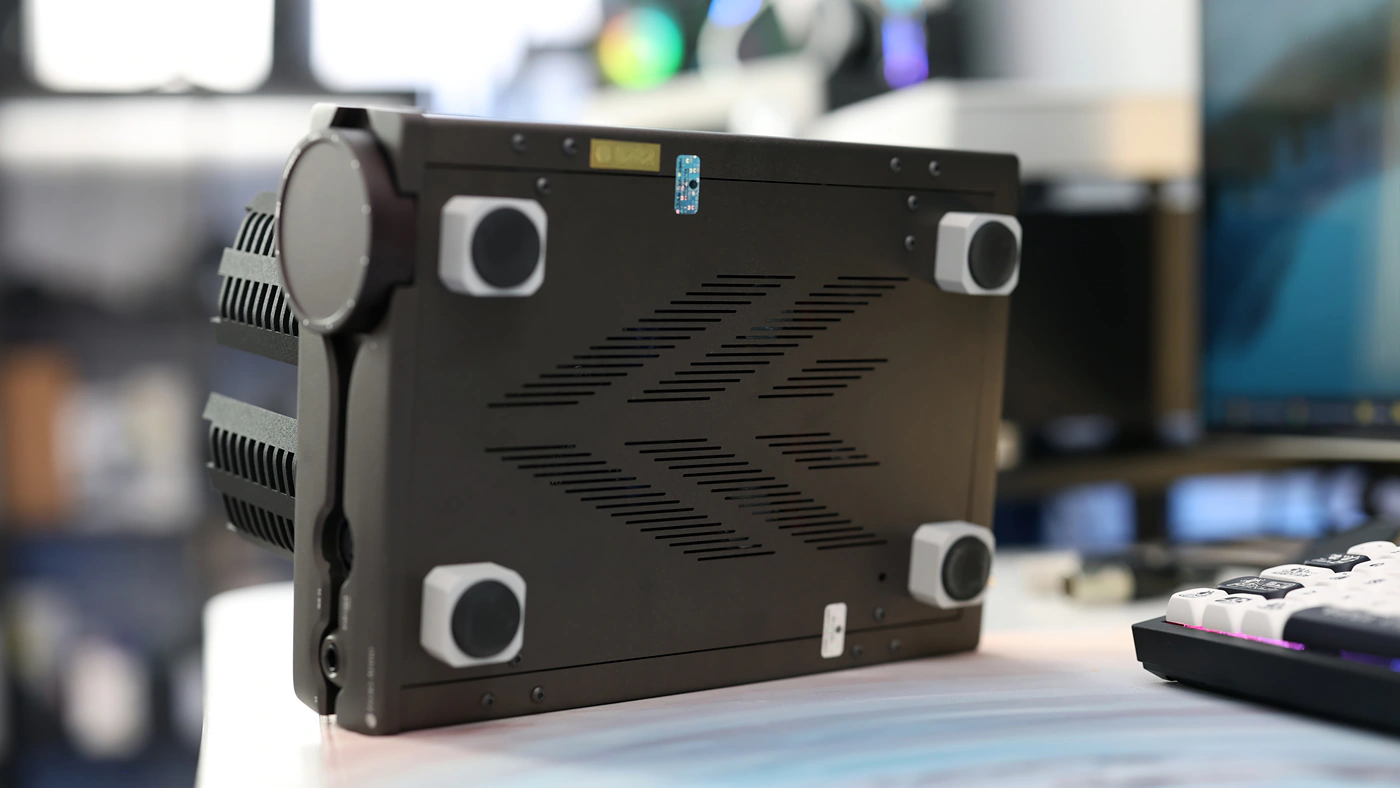
Feliks Audio Euforia Evo vs Violectric HPA V340 (2991 USD vs 2000 USD)
Build – From a build standpoint, HPA V340 is a solid state amplifier, with a solid, if somewhat industrial design, strong chassis and a zero background policy. Both amplifiers feature a balanced headphone output in the XLR format, and single ended outputs, although HPA V340 features only RCA inputs, and RCA and XLR Line Outs. You can select whether you’re going to use the Headphone output or the Line Out with Violectric HPA V340, while with Euforia Evo, you cannot pick between them. The crossfeed circuit is something that only Euforia Evo has, and HPA V340 is as pure as it is possible for a headphone amplifier. The maximum driving power is rather good for both, but HPA V340 has quite a bit more for hard to drive headphones, although both are pretty good.
Sound – Sonically, both amplifiers sound neutral in the tuning, both show a clean, neutral and flat bass, but in the midrange Euforia Evo has the popular tube sound which gives music a certain sense of richness, the soundstage is much wider and has a stronger instrument separation as presented by Euforia Evo, with better imaging and a stronger dynamic range. HPA V340 sounds really bright, to the point of fatigue in the treble, it has a solid, hard sound, while Euforia Evo rounds up the treble a bit, gives it a slightly wet character which softens the harder edges a bit, and gives all music a sense of color and softness, which HPA V340 handles with full strength. Generally, HPA V340 can pair a bit better with really soft and smooth sounding headphones, but Euforia Evo is generally more musical, a bit softer, and has the tube magic everyone raves about, having a colorful, and coloring sound that brings more life and richness to music.
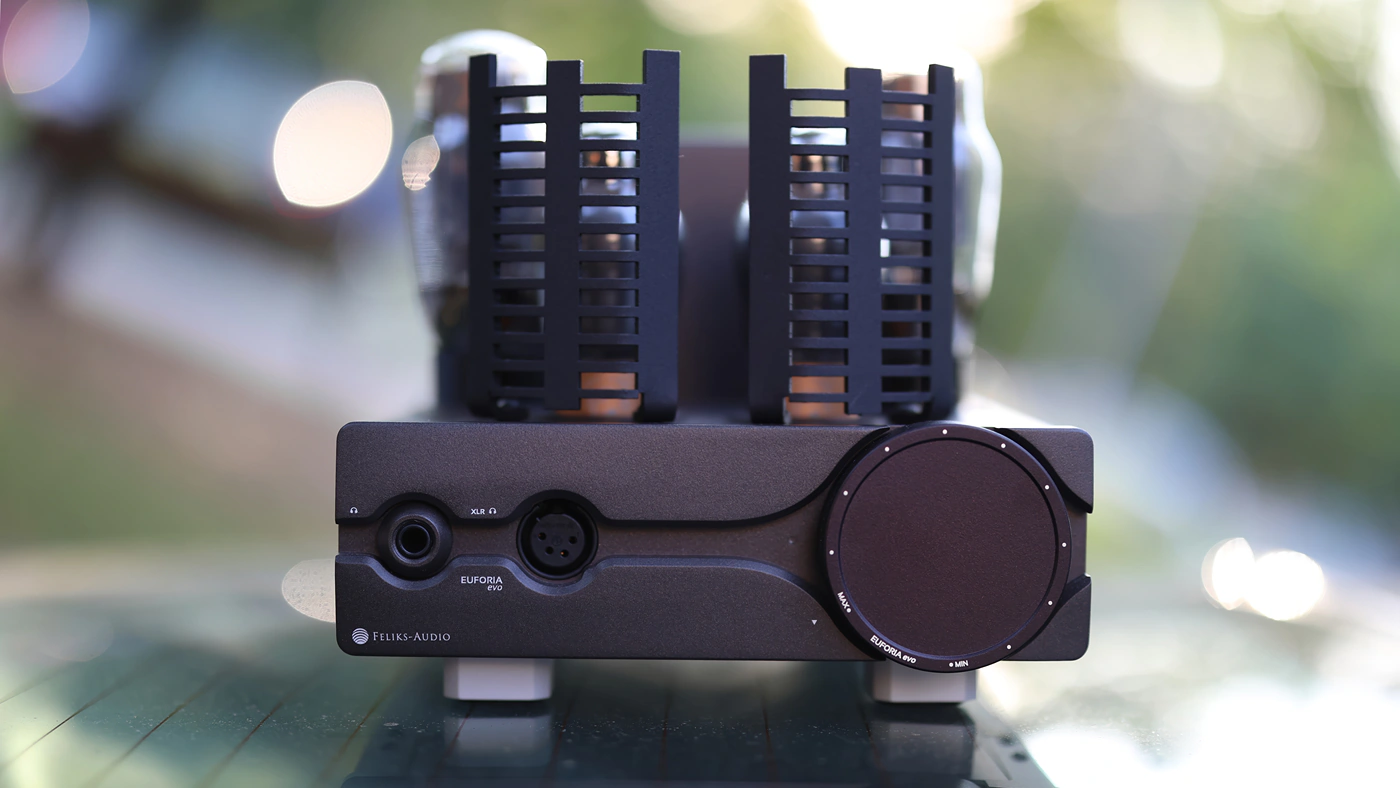
Feliks Audio Euforia Evo vs Feliks Audio Euforia (2991 USD vs 2000 USD)
Build – Constructionally, the two amplifiers are similar in quality and reliability, as Euforia is still alive and kicking, but the new Euforia Evo has a more playful, more colorful face, with the large volume wheel that has the gradation noted on the wheel itself, and with the XLR Balanced headphone output, it is a steep upgrade from the Euforia which only has a 6.3mm single ended headphone output. Both amplifiers have the crossfeed switch at the back, and both have a set of RCA Line Ins and RCA Line Outs, but although the driving power is similar on paper, the new Euforia Evo handles hard to drive planar magnetic headphones better, it is a rather large improvement in control, has a much lower distortion and can show bass better, especially in the sub-lows. Euforia Evo is clearly an evolution in how it handles noise too, the sound has far less noise, although that depends on what electronics you have around the tubes, as tube tech is inherently extremely sensitive to RFI and EMI, as tubes act literally like little antennas for EMI and RFI.
Sound – Sonically, Feliks Audio keeps improving their amplifiers, the sound of the new Euforia Evo is more colorful, more contrasty and more dynamic, drawing in a much better resolution, detail and a wider soundstage than the original Euforia. While Feliks Euforia is a good tube amp, Euforia Evo works beautifully well with HIFIMAN HE1000SE, and other modern hard to drive planar magnetic headphones. The midrange is richer on the new Evo, the treble is brighter, more airy, while the bass is deeper, the whole sound is more colorful and more emotional, so if you ever heard the Euforia, Evo is everything Euforia is, but better, with a lower background noise too.
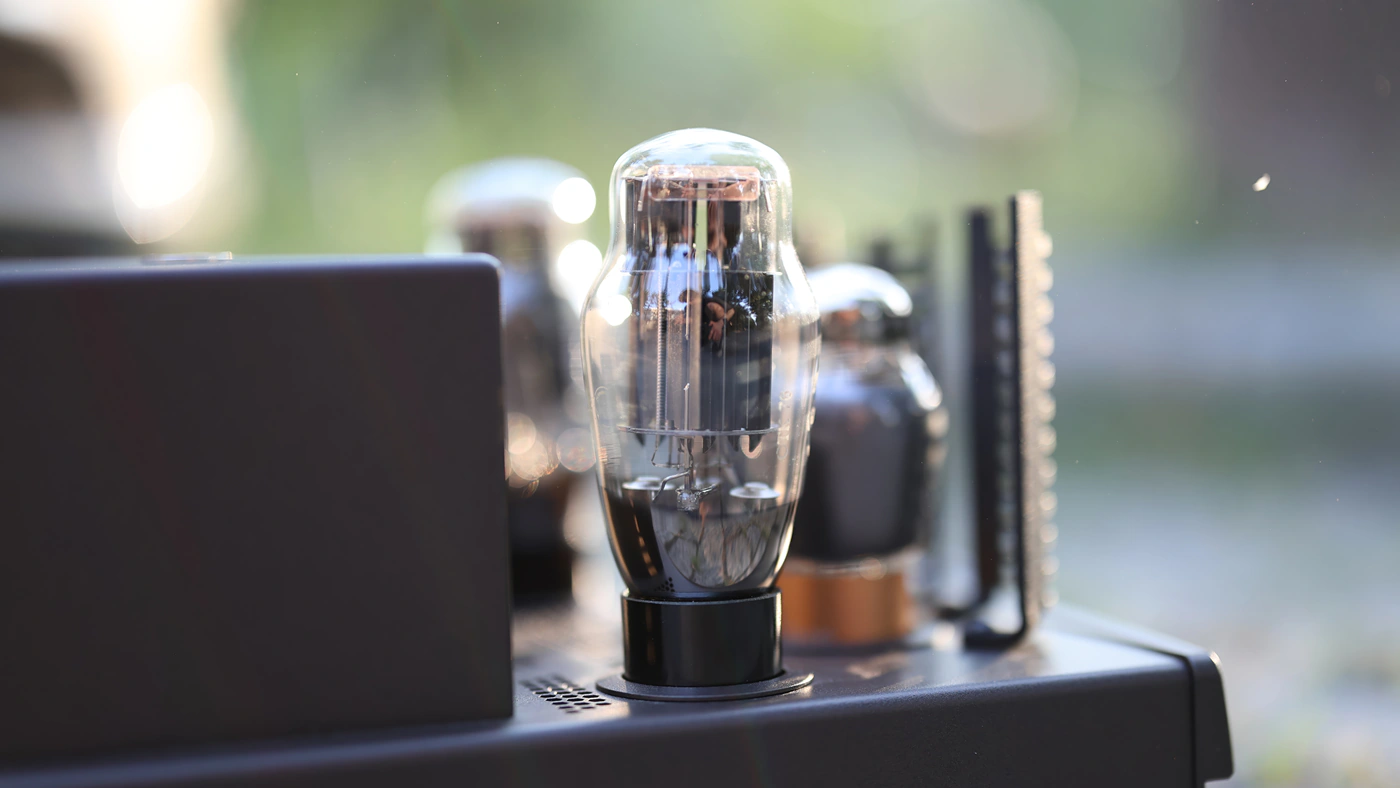
Feliks Audio Euforia Evo vs Audio Analogue AAdac (2991 USD vs 4000 USD)
Build – Although both devices are large, the unique shape of the AAdac makes it far harder to integrate in a system unless you complete it with other Audio Analogue components. Euforia Evo is a classic that will always combine nicely with everything, even at the top of the Pylon Audio Diamond 30 mkii speakers. AAdac has a DAC inside, but although it is their flagship DAC currently, the DAC chip is heavily outdated. AAdac does not have any kind of balanced headphone outputs, the embedded headphone amplifier is powerful, but only single ended, and does not work well for the extremes, IEMS or ultra hard to drive headphones, while Euphoria Evo works well with basically any Headphone, and with most IEMs too. AAdac is much piricer, but it is also made in Europe, Italy.
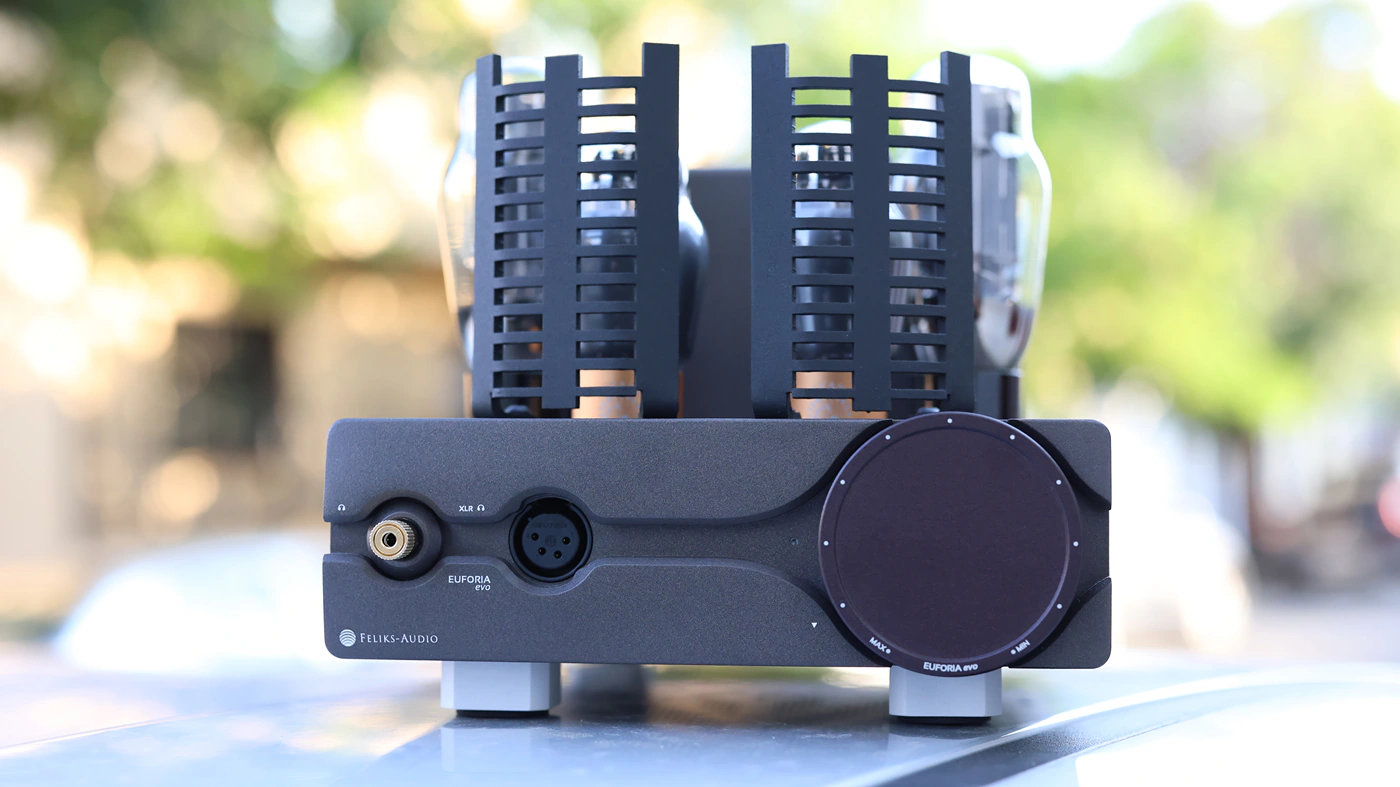
Sound – Sonically, AAdac is focused on sounding dynamic, so it has a dynamic and punchy sound, but quickly loses control with hard to drive planar magnetic headphones, and has a rather loud noise floor for IEMS, and even for certain headphones. In comparison, Euforia Evo is much richer in the midrange, more colorful, more contrasty and more revealing with a better resolution and a more dynamic sound. AAdac is fairly warm and full sounding, while Euforia Evo is more neutral in the bass, relying on an emotional, detailed sound to be appealing. Although I often commended AAdac for its dynamics, Euforia Evo has a higher dynamic range, can reveal instruments better, and has a stronger instrument separation, driving both easy to drive and hard to drive headphones much better than AAdac. Overall, AAdac is slowly starting to show its age and Euforia Evo is a rather large progress compared to the original Euforia, keeping up with the times and offering a compelling reason to upgrade.
Value and Conclusion
At the end of the day, Euforia Evo delivers on every plane it promises to, and just like a true boutique quiet luxury brand, Feliks Audio doesn’t need to flaunt anything, those who want a perfect tube amplifier made with true dedication and mastery will instinctively know that Euforia Evo has a high price / performance ratio, even when we consider its rather high price point. It isn’t the package, it is the amplifier itself and the quality of the build, as well as the final result, the sound that justifies the price.
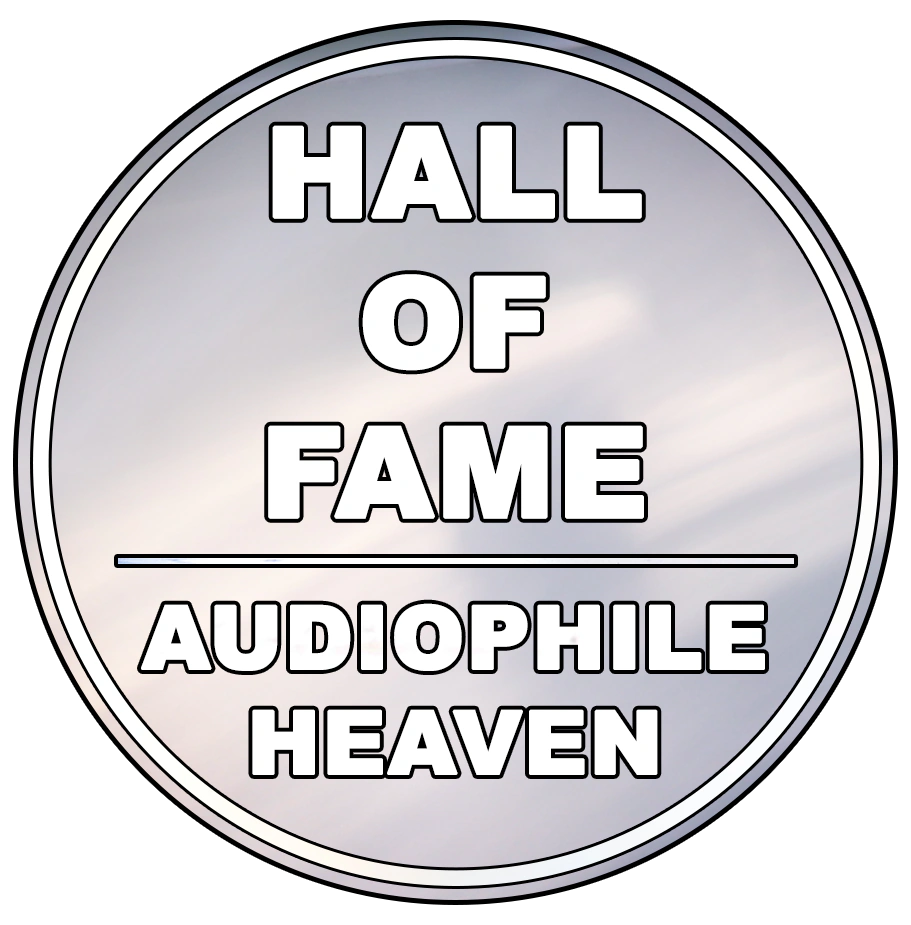
Before the end of today’s review, I think we did come to the conclusion that Euforia Evo offers everything the original Euforia offered but improved on the dynamic range, clariy, driving power and control, without increasing the price much, but getting a more beautiful design, so Euforia Evo will replace the original Euforia in the Audiophile-Heaven Hall Of Fame, and knowing Feliks Audio it will likely have a life just as long, ranking among the best audiophile tube Amps ever designed.
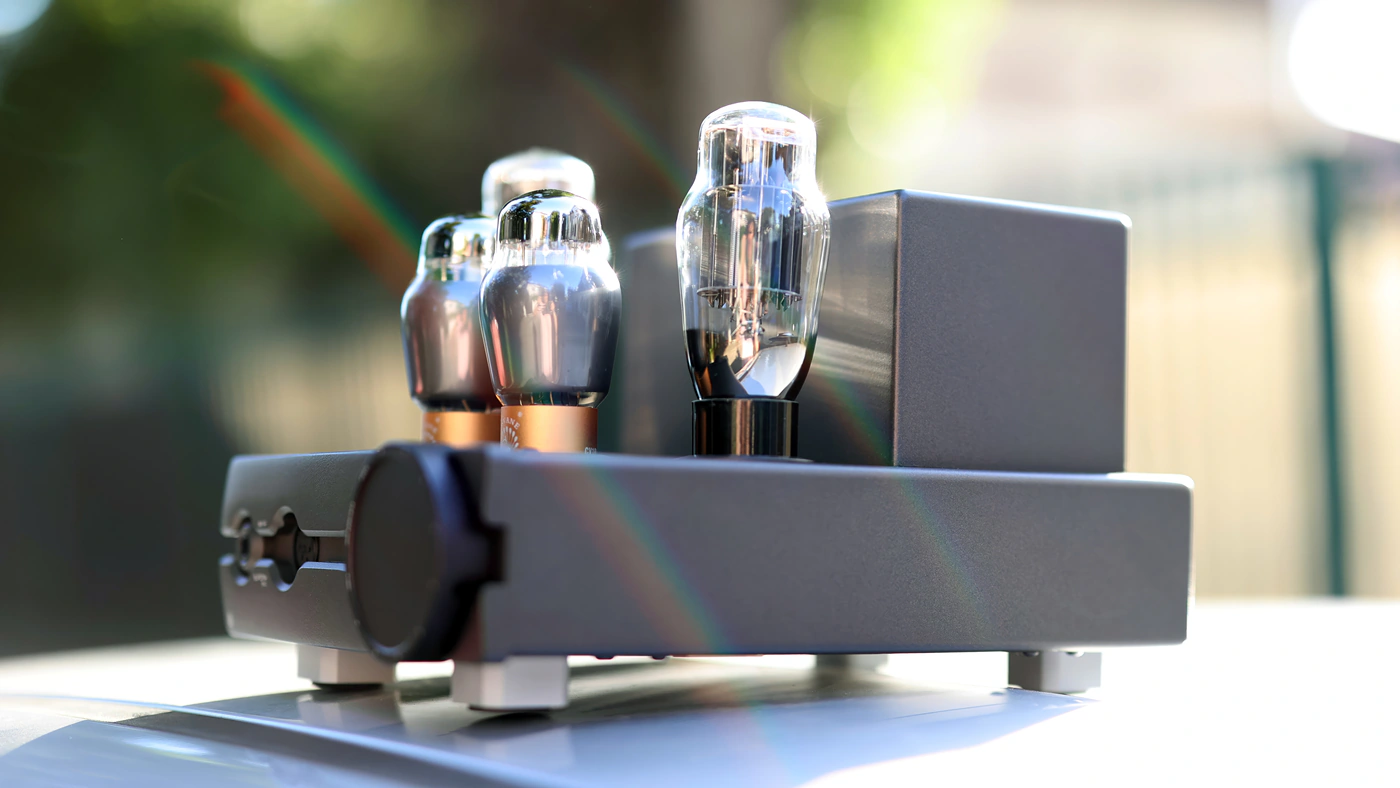
At the end of the day, if you want perfection in the craft, a uniquely rich, neutral and smooth sounding amplifier with a wet character, excellent resolution and high degree of dynamics, Feliks Audio Euforia Evo is a top choice and one of the few AMPs I could easily recommend to anyone wanting to experiment pure audiophile pleasure, and drive most planar magnetic headphones and most dynamic headphones with an OTL AMP.
Product Link
Feliks Audio Official Page – https://feliksaudio.pl/product/euforia-evo/
--- Please remember to stay safe, and always have fun while listening to music!---
- If you have a dime to spare, please donate, and help us! It would make the day brighter for me and my wife-
Full Playlist used for this review
We listened to more songs than those named in this playlist, but those are excellent for identifying a sonic signature. I recommend trying most of the songs from this playlist, especially if you’re searching for new music! The playlists are different for Spotify, Tidal and Youtube, and based on the songs I enjoy and are available on each!
https://www.youtube.com/playlist?list=PL_cjBXGmwSHSdGcwuc_bKbBDGHL4QvYBu
https://open.spotify.com/playlist/5J3oloz8Riy9LxEGenOjQ0?si=979ba4f082414be7
https://tidal.com/browse/playlist/330fd544-8e5b-4839-bd35-676b2edbb3d5
--- Contact Us ---





